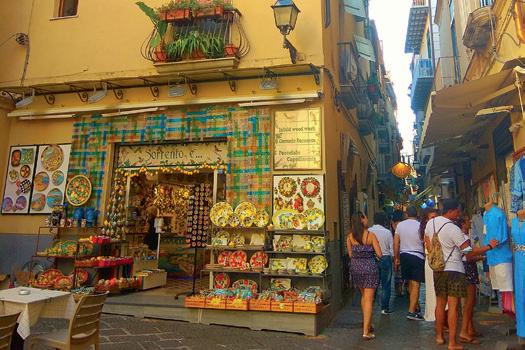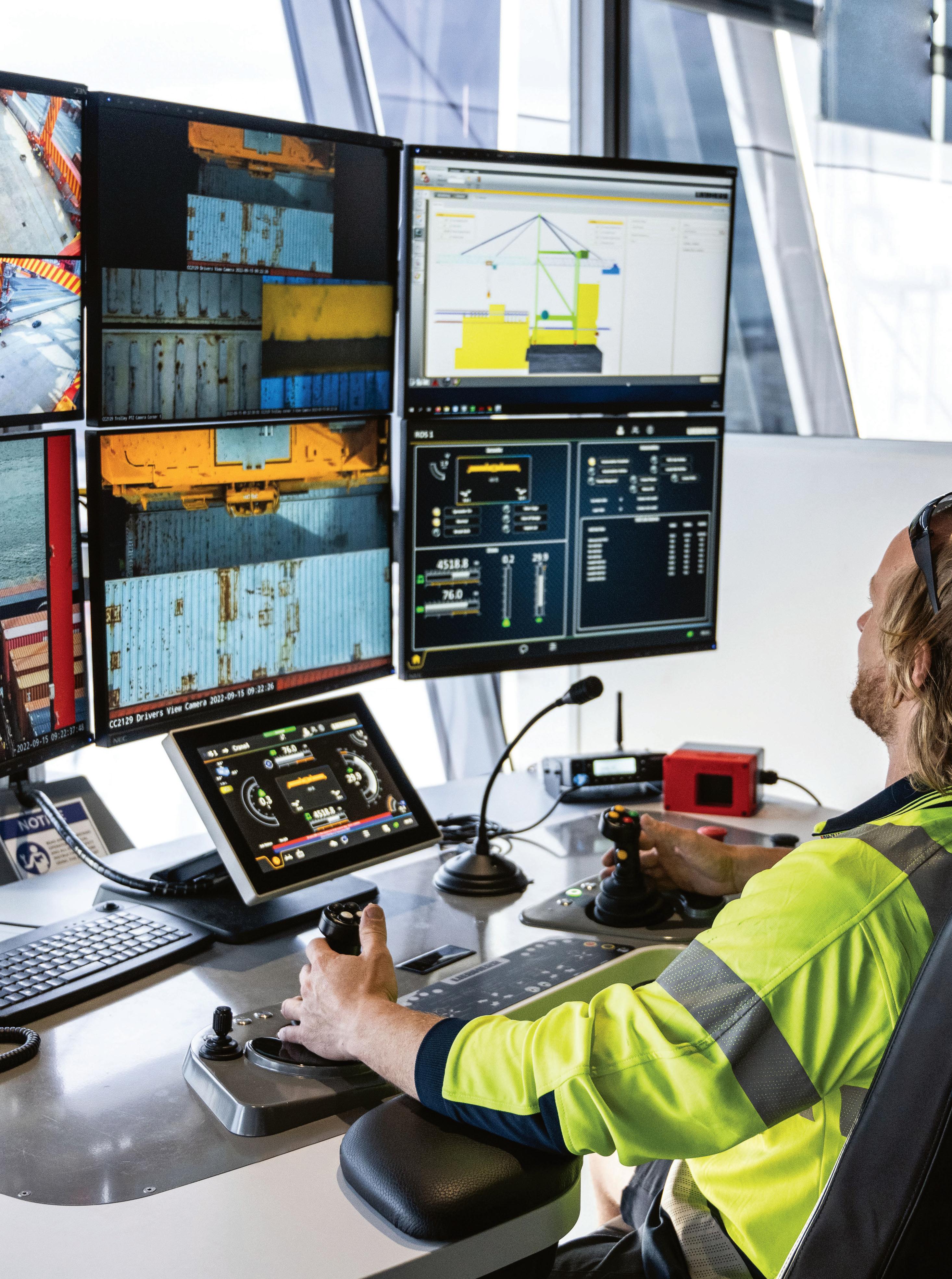


Panel
Cordero sets positive tone Pacific Islands Round Table





Panel
Cordero sets positive tone Pacific Islands Round Table

The Port of Long Beach is moving record amounts of cargo without backlogs or disruptions, and we’re doing it greener than ever, lowering emissions dramatically while keeping the supply chain moving and supporting millions of jobs.

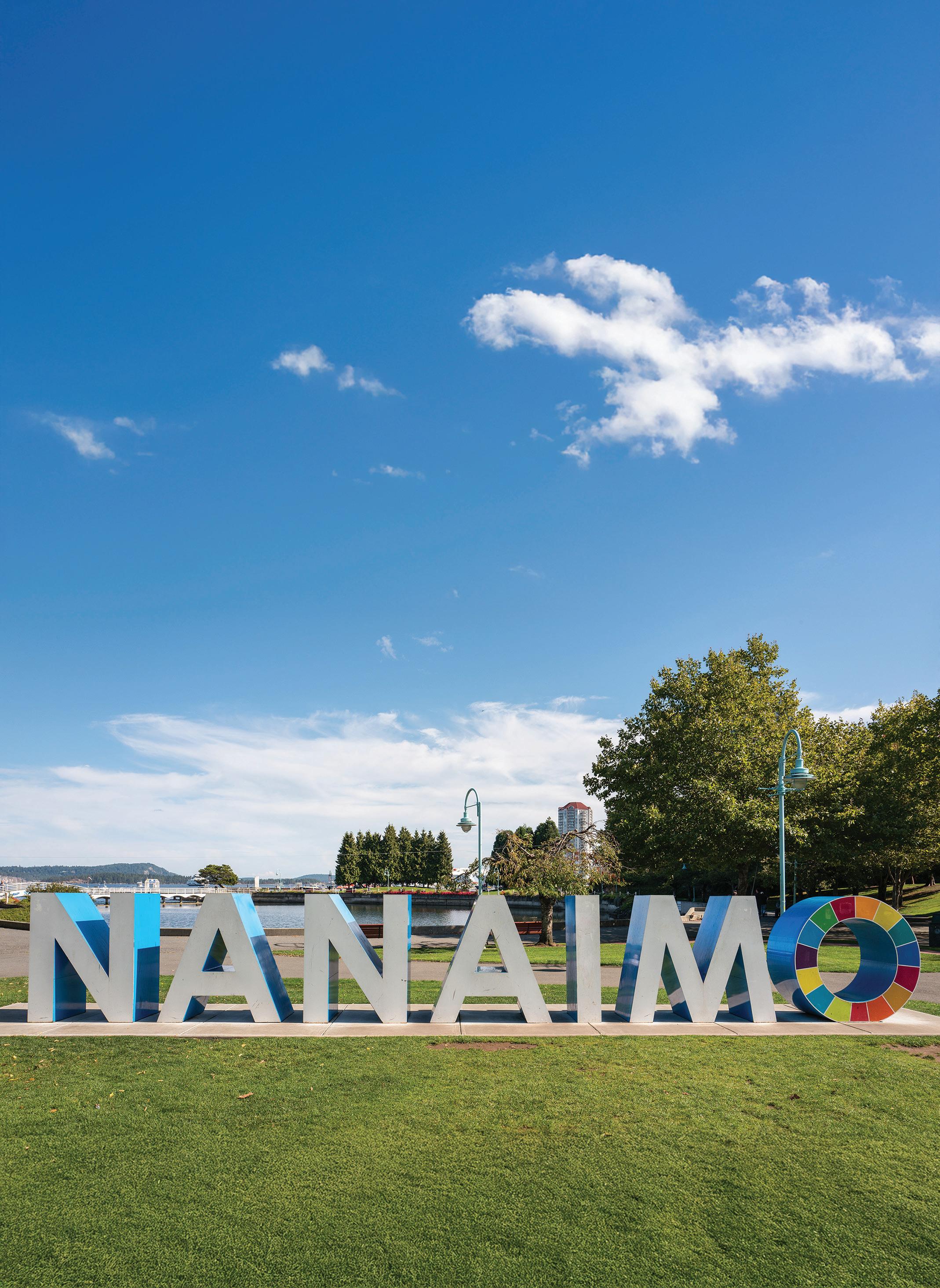






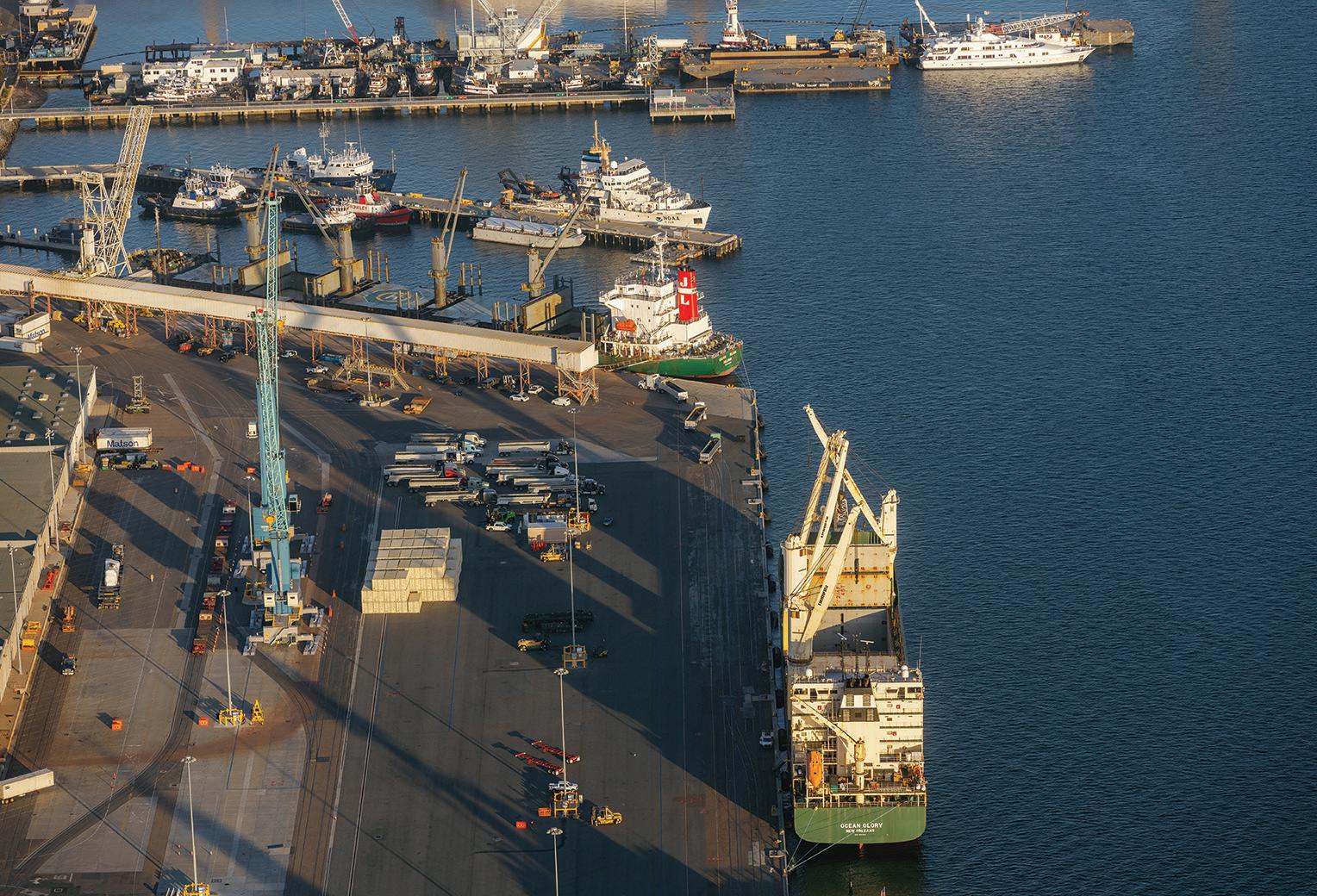
MARAD
Unrealistic
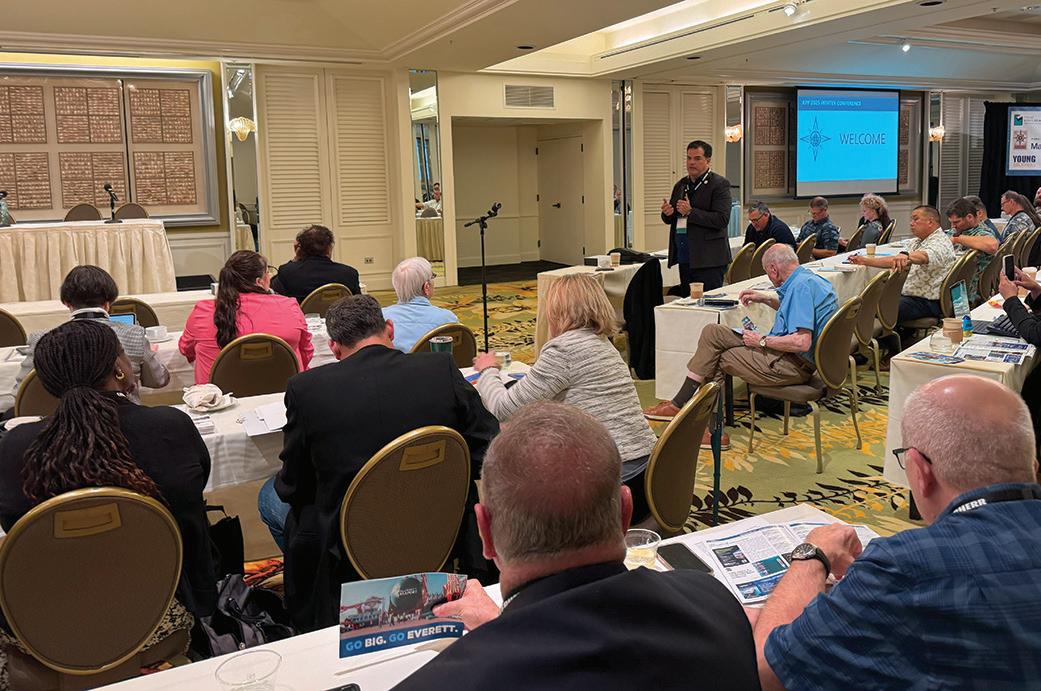
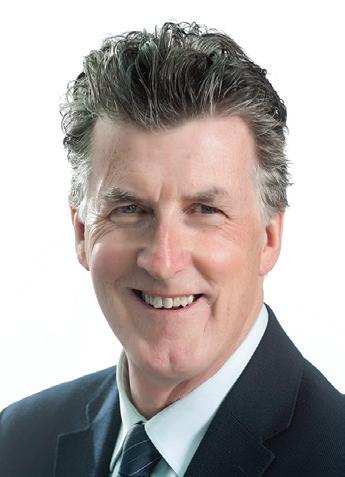
Ian Marr, President & CEO Port of Nanaimo, BC Canada
Ian Marr, President, Port of Nanaimo, BC Canada
Conchita Taitano, First Vice President, Port Authority of Guam, Guam USA
Stephen Ribuffo, Second Vice President, Port of Alaska, AK
Jerry Nathan, Third Vice President, Republic of the Marshalls Islands Port Authority, RMI
Chin-Jung Wong, Past President, Taiwan International Ports Corporation
Shu-Hui Cheng, Taiwan International Ports Corporation, Ltd., Taiwan
Zoran Knezevic, Port Alberni Port Authority, BC Canada
Sara Young / Kevin Ware, Port of Skagit, WA USA
Kirk DeJesus, Port of Stockton, CA USA
Sharon Weissman, Port of Long Beach, CA USA
Barney Sene, American Samoa Department of Port Administration
Manuel Fernando Gutiérrez Gallardo, General Coordination of Ports and Merchant Marine
AT-LARGE REPRESENTATIVE
Kim B. Puzey, Port of Umatilla, OR USA
Frederick Pangelinan, Commonwealth Ports Authority, Commonwealth of Northern Mariana Islands USA
STAFF
Jane McIvor (jane@pacificports.org)
Philippe Critot (philippe@pacificports.org)
The APP has been committed to building partnerships, facilitating dialogue, and encouraging best practices for port governance and management throughout the Pacific since it was established in 1913 as the Pacific Coast Association of Port Authorities.
Throughout our 100+-year history, our objectives have remained consistent. With a focus on collaboration, the APP strives to encourage and facilitate best practices and professional development through conferences, workshops annd strong communications.

March 2025
Volume 6/Issue 1
Publisher
Association of Pacific Ports
Executive Director & Editor Jane McIvor
Contributors
Mika Aga Antonio Borja
Mike Carter Scott Chadwick
Jerra Cing Justine Chen
Mario Cordero John Daley
Kristin Decas
Andrew Doherty
Tom Ewing Donna Hais
Gus Hein DreanaLee Kalili
Tracy Largent
Bonnie Lowenthal
Jane McIvor Stan Maupin
Paula Miranda William Paape
Kim B. Puzey Ryan Pessah
Rory Respicio Tom Stiger
Zoya Tayag Kevin Ware
Jeff Wingfield
Advertising Phone: 323-578-2452 Philippe Critot (philippe@pacificports.org)
Editorial & Association business Phone: 604-893-8800
Jane McIvor (jane@pacificports.org)

Contents copyrighted 2025
Association of Pacific Ports
300 - 1275 West 6th Avenue, Vancouver, British Columbia Canada V6H 1A6 Phone: 604-893-8800 / E-mail: jane@pacificports.org
The opinions expressed by contributing writers are not necessarily those of the Publisher. No part of this magazine may be reproduced in any form without written permission of the publisher.
EDITOR’S NOTE: Due to the international nature of our membership, spelling within each article remains consistent to the country of origin.

or well over 100 years, the APP has focused on building relationships and promoting the efficiency of ports and harbors by sharing best practices. At a time when trade wars threaten to disrupt supply chains, government communications are strained, and uncertainty hovers over the decision-making capabilities of industry and business, our mandate has never been more important. The main vehicle for fulfilling our mandate is our conferences. Agendas are developed with the two objectives above in mind: strong speakers with relevant topics as well as our Port Update session provide attendees with industry knowledge that is invaluable for professional growth; networking excursions and meals allow for opportunities to develop contacts that will last long after the conference has ended.
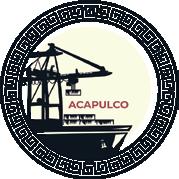
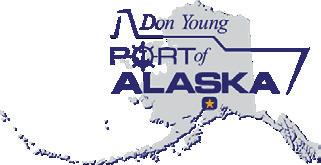





For those who have attended our conferences in the past, you get it. You understand the value of hearing from your peers. You’ve had personal discussions with commissioners and directors, senior executives and management from other ports and gained insights into their experiences with issues your port is currently addressing. And you recognize the importance of meeting your peers and industry stakeholders — making it easier to reach out to another port if you already have a contact there.
For those who haven’t attended our conferences, this issue of Pacific Ports is for you. As you read through the articles and browse the photos, you’ll understand the importance of an APP Conference. From our Industry Insight with new Port of San Diego CEO Scott Chadwick (who I had the



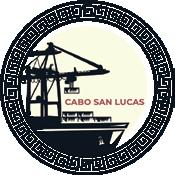


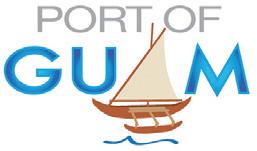
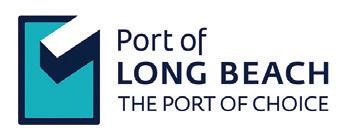



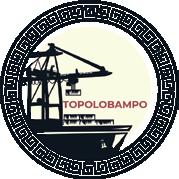
opportunity to meet at our Winter Conference and set up the interview), to summaries of the Port Update session, keynote presentations and panel discussions, the information imparted to attendees was extensive. And it was done in a forum where everyone was engaged. Attendees are to be commended for the hard work they put in during the days. Evening events provided a great opportunity for people to discuss the topics raised during the day, to meet new acquaintances and to catch up with old friends.
Our next conference is set for Nanaimo, B.C. on Canada’s West Coast — August 10 to 13. For past attendees, it will be great to see you again. For those who haven’t attended before — you should. It would be great to meet you.
— Jane McIvor



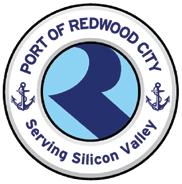









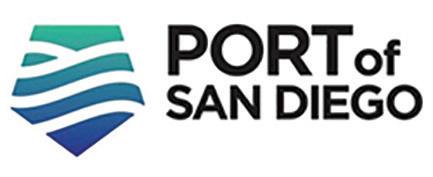


Kaohsiung Port Cruise Terminal welcomed a Historic Dual Maiden Call in late January. For the first time, the terminal hosted two maiden calls on the same day, welcoming the Seabourn Encore and Norwegian Sky. Port of Kaohsiung welcomed both ships with a ceremonial water salute and presented their captains with plaques commemorating their ships’ maiden calls to the port and the port’s warm welcome.
To ensure its ability to effectively handle two cruise ships concurrently, Kaohsiung Port Cruise Terminal officially opened its new extended corridor just in time to welcome Seabourn Encore and Norwegian Sky’s passengers. With the new corridor, the terminal can serve one large and one mediumsized cruise ship at a time, providing passengers with a comfortable and convenient indoor environment.
The Seabourn Encore was built in 2016 by the Italian-based global topfour shipbuilder Fincantieri S.p.A. Weighing in at somewhat over 40,000 GT and measuring around 210m in length, the Seabourn Encore has a maximum capacity of 600 passengers, with all cabins designed as suites that afford
spectacular sea views. Top-of-class passenger amenities include Michelin-star dining, exceptional wines, stage musicals, a fitness center, spa services, and more. Encore’s current 14-day itineraries depart from Hong Kong and are scheduled to call at Taiwan, the Philippines, Malaysia, and Singapore, providing passengers a well-rounded “taste” of Asian culture and hospitality. The ship stays in Kaohsiung Port for two days and one night, allowing passengers to deeply experience the charm of the city.
Norwegian Cruise Line ranks among the world’s top-three largest cruise ship operators, and Norwegian Sky, weighing in at just over 77,000 GT and measuring around 258m in length, has a maximum capacity of 2,004 passengers. The ship underwent a massive US$100 million refit in 2024. The diverse array of onboard amenities available, including gourmet dining, a luxurious bar, a Starbucks café, stage musical performances, a fitness center, swimming pool and spa, help make every Norwegian Sky cruise an exceptional experience. Norwegian Sky’s current 10-day itineraries depart from the Philippines, and are scheduled to call at Taiwan and Japan. On this maiden
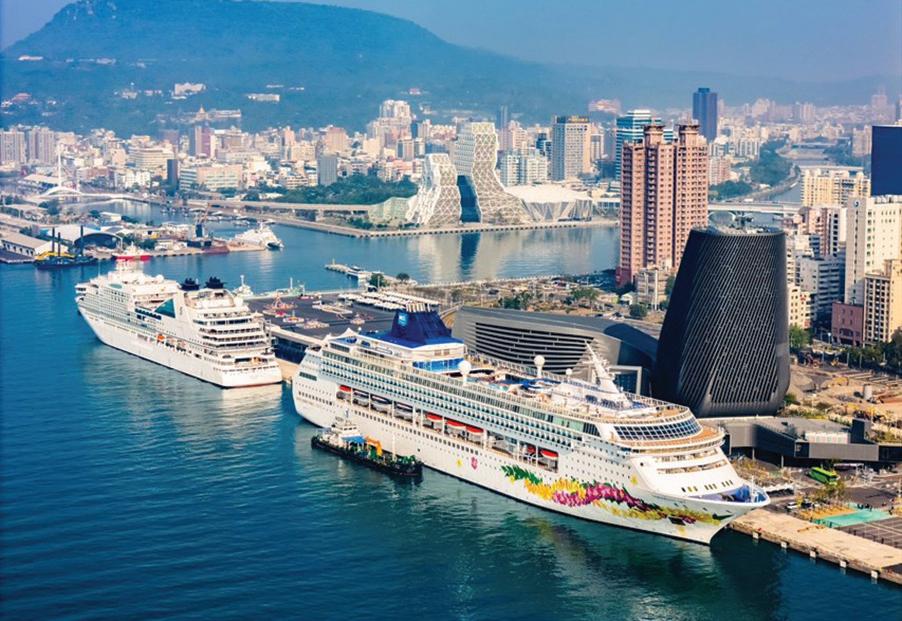
voyage, passengers are being treated to a spotlight tour of southern Taiwan’s cultural diversity.
Upon arrival, Port of Kaohsiung and Kaohsiung City’s Marine Bureau jointly sponsored a spirited indigenous dance performance to welcome the two ships’ passengers to Taiwan. Also, a pop-up couplet-calligraphy classroom led by an experienced ink-and-brush artist was set up in the terminal to teach the art of Chinese calligraphy to interested passengers and to convey the warmth and charm of Taiwanese culture. The fun and festive atmosphere in the terminal gave passengers a truly special experience to cherish and remember.
Port of Kaohsiung has maintained close coordination and communications with CIQS agencies to handle the needs of passengers overnighting at the Port, ensuring the provision of all-hour services and streamlined, efficient customs clearance. Port of Kaohsiung is committed to giving all visiting cruise ships and passengers a world-class service experience. The Port looks forward to welcoming growing numbers of international cruise ship visits in the future and to injecting new vitality into Taiwan’s inbound tourism sector.

Satsop Business Park General Manager Alissa Shay has been named the new Deputy Director of the Port of Grays Harbor. Since 2013, Ms. Shay has been responsible for the operations and business development at the Satsop Business Park, attracting over 15 new tenants totaling over 350,000 SF of industrial space and generating more than 350 jobs.
Ms. Shay holds a Master’s in Public Administration from Evergreen State College, a Bachelor’s in Planning and Environmental Policy from Western Washington University and a Port Professional Manager Certification from the American Association of Port Authorities. Along with overseeing the Operations of the Satsop Business Park and Friends Landing, she will also now oversee the Industrial Property Division and the Marine Terminal Division.
“We are pleased to welcome Alissa Shay as the new Deputy Director of the Port of Grays Harbor. Her proven leadership and extensive experience at the Port’s Satsop Business Park will be invaluable as we continue to expand and enhance operations. Alissa’s dedication to innovation, efficiency, and business development aligns perfectly with our mission to drive economic development and create jobs across Grays Harbor. We are confident that her contributions will further strengthen the Port’s legacy of success,” stated Port of Grays Harbor Executive Director Leonard Barnes.
“I am honored to serve as the next Deputy Director of the Port of Grays Harbor while working alongside our extraordinary team as we enter a historic time for the Port. As a lifelong Harborite, I am committed to the




Port’s mission of job creation and economic development to benefit our beautiful Harbor community that we call home,” shared Alissa Shay.

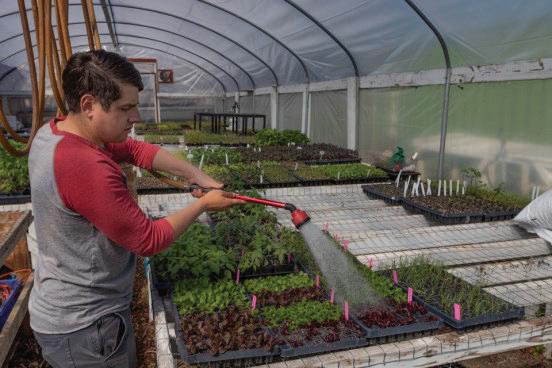
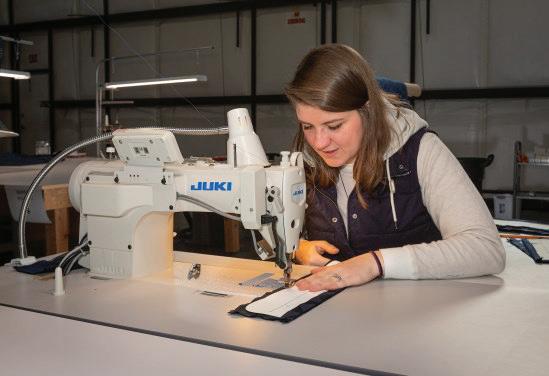
Transportation and environmental policy leaders and scholars from California state agencies and the ports of Long Beach, Los Angeles and Shanghai gathered in mid-March to discuss their efforts to decarbonize the maritime industry via development of a Green Shipping Corridor between California and Shanghai.
The Port of Long Beach hosted leadership from the California State Transportation Agency (CalSTA), the California Air Resources Board (CARB), the California Energy Commission (CEC) and executive-level government representatives from the Shanghai Municipal Transportation Commission (SMTC) for the California-Shanghai Maritime Decarbonization and Green Shipping Corridor High-Level Forum.
The California-China Climate Institute (CCCI), the Port of Long Beach, the Port of Los Angeles, the International Council on Clean Transportation (ICCT), C40 Cities and other key stakeholders and industry representatives were instrumental in coordinating this event, which highlighted the role of infrastructure development and the policies and regulations needed to advance international green shipping corridors.
In addition to high-level leadership from SMTC, the Chinese delegation included members of the Shanghai International Port Group, COSCO Shipping Holdings Co., Shanghai Maritime University and the China Classification Society. The attendees also included key technical and policy experts, government representatives, academics and researchers, industry representatives and members of the environmental justice community.

“Everyone involved in this initiative sees the potential of the Green Shipping Corridor that now connects California to Shanghai...”
“Transportation and goods movement continue to be a critical part of the backbone of our strong and thriving economy, and we are thrilled to join forces with Shanghai Municipal Transportation Commission in this important work,” said California Transportation Secretary Toks Omishakin. “Our team at CalSTA looks forward to continued cooperation with our ports and international partners as we collaborate in our efforts to decarbonize goods movement in the maritime sector.”
“The Port of Shanghai is the busiest container port in the world,” said SMTC Deputy Director General Ye Xing. “We value our partnership with the State of California and have established productive working relationships with the ports of Los Angeles and Long Beach. Together, we are committed to advancing port decarbonization and the essential development of green shipping corridors.”
Over the years, California and China have engaged in open dialogue on climate cooperation. In 2023, Governor Gavin Newsom traveled to China where he committed to strong collaboration to advance shared interests related to climate action, the reduction of greenhouse gas emissions and short-lived climate pollutants and the acceleration and deployment of clean energy. During the visit, five cooperative agreements were signed. One Memorandum of Understanding between California and Shanghai aims to advance clean, low-carbon transportation including the development of clean ports and green shipping. This work complements the existing partnership between the ports of Los Angeles, Long Beach and Shanghai to decarbonize one of the world’s busiest container shipping routes.
The forum was an opportunity to highlight that the Port of Long Beach, together with the Port of
Los Angeles, C40 Cities and the Shanghai Municipal Transportation Commission (SMTC), jointly published, in October 2024, their first ever Green Shipping Corridor Partnership Annual Progress Report, which outlines significant progress made toward decarbonizing maritime vessels. The Port of Long Beach also recently published a white paper on the use of clean marine fuels in shipping.
“Everyone involved in this initiative sees the potential of the Green Shipping Corridor that now connects California to Shanghai,” said Port of Long Beach Chief Executive Officer Mario Cordero. “Twenty years ago, the Port of Long Beach made a commitment to clean air, resulting in significant reduction in harmful emissions today. Our green journey has evolved into a goal of zero emissions and decarbonizing one of the world’s busiest trade routes, and it’s great to see the parties involved in the green corridor stepping up the collaboration needed to reach this destination. Infrastructure investment and policy changes to allow clean marine fuels to be more widely used will be particularly important to maximize the trans-Pacific partnership we saw in Long Beach last week.”
“Decarbonizing goods movement between the largest ports in the United States and China requires international cooperation and that’s exactly what we’re doing through our work on the Green Shipping Corridor Partnership,” said Port of Los Angeles Executive Director Eugene Seroka. “We are committed to working toward the deployment of zero lifecycle carbon container ships on the corridor by 2030.”
International partnerships that leverage existing trade relationships have been essential to drive progress on decarbonization of shipping. Green Shipping Corridors provide a forum for partnership and cooperation where all participating parties come together
with an aim to achieve goals and advance toward use of low- and zerocarbon fuels and technologies.
One of these corridors is the Los Angeles – Long Beach – Shanghai Green Shipping Corridor. Goals in this specific green corridor include deploying reduced or zero lifecycle carbon emission capable ships and facilitating investment in clean marine fueling infrastructure at the partner ports.
This forum brought together leadership to weigh in on these topics, to dive deeper into the necessary components of green shipping corridors and explore opportunities for greater collaboration in this emerging space.
“The California Energy Commission is a proud partner in this effort to decarbonize our Ports and implement the Green Shipping Corridor effort between the ports of Long Beach, Los Angeles and the Port of Shanghai,” said CEC Commissioner Nancy Skinner. “The Ports of Los Angeles and Long Beach have made great strides in decarbonizing their port operations, and the CEC is proud to have funded multiple projects at each port that are furthering the transition to clean energy and green shipping goals here in California.”
In 2024, California State leadership traveled to Shanghai to see port operations in real time and witness firsthand innovation being employed. Later that same year, the United States

Department of Energy published a Maritime Decarbonization Action Plan, which identified pathways to achieve a zero-emissions maritime sector by 2050. The global community is committed to advancing green shipping — and progress and planning are already underway.
“California is a global leader in climate action and is committed to the health and prosperity of both people and planet,” said CARB Chair Liane Randolph. “As a champion for clean air, the California Air Resources Board remains dedicated to working together to identify opportunities for deeper decarbonization in the green shipping space.”
CCCI, a University of Californiawide initiative housed jointly at UC Berkeley’s Rausser College of Natural Resources and School of Law, supported much of the planning for the forum. Through research, training and dialogue, CCCI aims to inform policymakers, foster cooperation and partnership, and drive climate solutions at all levels.
“In this interconnected world, where we share oceans, shipping corridors, trade and climate impacts, it’s increasingly critical for us to also share ideas and solutions,” said CCCI Executive Director Fan Dai. “Cutting climate pollution from shipping requires deep collaboration, and that’s what this forum is all about.”

This year, the Port of Everett Seaport and two of its international shipping liners — Eastern Car Liner Ltd. (ECL) and Swire Shipping (formerly Westwood Shipping Lines) — celebrate 20 years of direct service, supporting the efficient movement of cargo across the global supply chain.
The Port of Everett Seaport is Puget Sound’s premier breakbulk cargo facility, handling high-value, conventional and over-dimensional cargoes in support of the aerospace, military, construction, manufacturing, agriculture, energy and forest products industries.
Over the past two decades, through its many longstanding partnerships like those with ECL and Swire Shipping, the Port of Everett has moved more than $319 billion worth of imports and exports through its shipping facilities. The Port of Everett Seaport consistently ranks as #2 export customs district in Washington state and #5 on the entire U.S West Coast.
With 60 percent of jobs in Snohomish County tied to international trade, the Port of Everett Seaport is a key resource for supporting the regional economy.
“Port operations support more than 40,000 jobs in the region thanks, in part, to these key shipping partnerships, our investment in flexible infrastructure and our skilled workforce,” Port of Everett Executive Director/ CEO Lisa Lefeber said. “We are proud that both ECL and Swire Shipping have called on our Port for the past 20 years, and we look forward to many more years of partnership.”
The Port serves as an extension of the regional aerospace manufacturing process. The Port, ECL, and Swire Shipping have worked together to successfully transport all oversized
components for the 747 (now retired), 767, 777, 777X, and KC-Tanker programs, bringing aerospace parts manufactured in Japan to the factory floor in Everett, Wash.
In addition to aerospace, ECL and Swire Shipping transport many cargoes critical to other key industries and jobs across the region — from automotive, military, and construction to agriculture, forest products, consumer goods and more. Both companies have decades of experience in providing customers with safe, efficient, and reliable service between ports all over the world.
Port of Everett Executive Director/ CEO Lisa Lefeber and Seaport leadership, Chief Operating Officer Carl Wollebek and Cara Craig, Director of Trade Development, visited ECL and Swire Shipping’s offices in Japan to mark the anniversary. The Port of Everett also has a longstanding relationship with the Port of Nagoya, Japan, and made a reciprocal visit to the port after Everett welcomed a Nagoya delegation last summer.
“ECL joins the Port of Everett to celebrate our 20 years of regular port calls,” said Bill Christ, Executive VP & COO, Eastern Car Liner (Americas), Inc.. “Success is achieved when all parties cooperate harmoniously. Much of ECL cargo is difficult and sensitive, demanding high attention. We continue calling on the Port of Everett because of the success and close partnership not only with the Port, but also with our stevedore, SSA Marine, the International Longshore and Warehouse Union (ILWU) labor force, and U.S. Customs and Border Protection. We thank the Port of Everett for fostering an environment of safe and efficient ship and cargo handling, and we are confident this will continue.”

Harry Stones, President, Swire Shipping North America echoed the thought: “We are proud to celebrate the 20th anniversary of our partnership with the Port of Everett. The Port is a vital part of our commitment to provide speedy service and industry-leading reliability to customers in the Pacific Northwest. We look forward to a long and fruitful partnership as we work together to connect communities and promote trade in the region.”
The Port of Everett Seaport has more than doubled its operational capacity in the last two decades. The addition of two, 40-ton capacity gantry cranes at Pacific Terminal in 2005 and the construction of Mount Baker Terminal in 2008, a custom aerospace facility in south Everett, created the opportunity for ECL and Swire Shipping to move aerospace shipments directly to and from the Port of Everett.
More recently, over the past decade, the Port has invested more than $150 million to modernize and green its Seaport. The Port’s $57 million South Terminal Modernization that was completed in 2021 made it possible for the Port to serve the larger ships and heavier cargoes of today’s modern shipping industry — adding another
full-service berth and expanding ondock rail. The Port’s new 40-acre Norton Terminal followed, opening in 2022. It is the first all-new cargo terminal to open on the U.S. West Coast in more than a decade, adding critical capacity to the global supply chain.
The Port strives for sustainable development at the waterfront. While the opening of Norton Terminal increased operational capacity, it also marked the completion of a multimillion-dollar upland environmental cleanup and redevelopment effort of a
former mill site. The Port is also working toward electrifying its Seaport by expanding shore power infrastructure to reduce its carbon footprint and serve an emerging market of all-electric harbor craft.
“We have been able to accomplish an incredible amount of work in the past two decades thanks to the strong leadership and foresight of our Port Commissioners, the diligent efforts of our staff, the ILWU, our loyal customers, and logistics and shipping partners like Swire Shipping and ECL,”
said Carl Wollebek, Chief Operating Officer at the Seaport.
The Port has received international recognition for its efforts over the years. Most recently, the Port of Everett Seaport was named 2024 Port/ Terminal Operator of the Year by Heavy Lift and Project Forwarding International, an international industry honor, for its maritime investments, quality customer service, high environmental and safety standards, and strong commitment to handle heavy lift and project cargoes.
The Port Authority of Guam continues to modernize its operations with the arrival of nine new container yard tractors. The new tractor additions are part of the $5.7 Million grant awarded to the Port by the U.S. Department of Transportation’s Maritime Administration under the America’s Marine Highway Program. The grant, announced by U.S. Transportation Secretary Pete Buttigieg on October 7, 2022, aims to enhance the nation’s supply chains by improving marine highway services and increasing the efficiency of cargo movement.
Through the Guam Marine Transportation Enhancement Initiative, this funding has enabled the Port to significantly expand its fleet of specialized container yard equipment, bolstering operations and strengthening its ability to handle cargo efficiently. Today’s arrivals bring the Port one step closer to completing its grant-funded procurement of vital equipment. The $5.7 Million in federal infrastructure funds has allowed the Port to procure the following equipment to date:
• 40-ton loaded container handlers (2) – Fully received, valued at $1,247,000.
• 10-ton empty container handlers (3) – Fully received, valued at $687,000.
• 180-foot boom lift (1) – Fully received, valued at $517,205.41.
• Container yard tractors (9) – Arriving February 28, valued at $1,791,327.
While the arrival of the yard tractors is a major milestone, the Port still awaits the delivery of:
• Five 5.5-ton forklifts, valued at $352,015.

• Two 40-plug mobile reefer generators, valued at $920,000.
The equipment procured through this grant must comply with the Build America, Buy America Act, ensuring that these investments support U.S. manufacturing and infrastructure development.
The addition of these container yard tractors will improve cargo-handling efficiency, reduce congestion, and enhance the Port’s overall resilience in supply chain management. As the Port awaits the final pieces of its grant-funded fleet, these strategic investments continue to position Guam as a key player in the region’s shipping and logistics network, ensuring the timely and effective movement of goods for years to come.
As the new CEO of the Port of San Diego, Scott Chadwick has found his dream job. “This is the best job I’ve ever had in my life and it’s because of the incredibly dedicated and talented Commission and staff,” he said. It’s that kind of enthusiasm and energy that sets the tone for our interview — and indeed, for Scott’s day-to-day attitude that promises to elevate the Port of San Diego even higher in standing as a ‘port of firsts’. Whether it’s the importance he places on relationships with his team, the community, and partner agencies and stakeholders, or his commitment to furthering initiatives that will improve efficiencies, environmental sustainability, and technological advances, Scott’s excitement is contagious.
PP: Tell me about your background. What sort of skills do you have that made you the successful candidate for the Port of San Diego role?
SC: Throughout my career, I have always focused on the people — whether it was during my time at the City of San Diego and the various positions I held — Chief Operating Officer, Human Resources Director, or Labor Relations Director, or as City Manager for the City of Carlsbad. Even my time as an Intelligence Analyst with the U.S. Army, I’ve always found that it’s the relationships that truly matter.

Whether it’s showing value for our employees or ... stakeholders, to be successful, the more we can lean into those relationships, the better we’re able to position ourselves to be a prosperous organization.
And it’s the same here at the Port of San Diego. Whether it’s showing value for our employees or the relationships we have with our member agencies and stakeholders, to be successful, the more we can lean into those relationships, the better we’re able to position ourselves to be a prosperous organization. For me — from a leadership perspective, it’s important to have a high-performing team that’s focused on our strategic mission and continuous improvement in delivering our services as efficiently as possible.
I love seeing how other organizations work — I’m constantly looking for ideas that will lead to greater efficiencies and improvements within our own Port so if I see someone else with a great idea and we’re able to tweak it and learn from their experiences, I’m all for it. I like to say it’s ‘R&D’ — not
‘research and development’ but rather ‘rip-off and duplicate’.
PP: Let’s look at your priorities for the Port, both short and long term.
SC: For the short term, the priority is to bring stability to the Port. There have been some changes in leadership over the last few years and the Commission wanted someone to effectively calm the waters. I want to make sure that our employees feel secure and motivated to be as productive as possible. And I want external stakeholders to know we can continue to excel from a customer service perspective.
In the longer run, quite simply, I want to make sure that we’re positioned to be one of the best ports, period. I know that sounds kind of ‘lofty’, but if we’re constantly pushing ourselves to do the best we can, we’ll continue to discover new areas of improvement.
The Commission shares my belief that we need to pursue the many projects we have on the go with an eye on being the best.
PP: A quick review of your website shows you do indeed have many projects underway over a diverse range of sectors. Could you provide some highlights on what will be coming to fruition over the next few years?
SC: One area that is very exciting right now is waterfront development. We continue to see strong demand for new commercial development on the bay. We’re actively processing multiple redevelopment projects that include a mix of hospitality and commercial uses at Seaport Village. We’re pursuing a transformation of East Harbor Island from rental car operations to a vibrant public recreation and commercial development with Topgolf as an anchor tenant of an entertainment district. In Chula Vista, we are excited for the completion of the 1,600-room Gaylord Pacific Resort and Convention Center and expect that demand for additional hospitality and different commercial uses in the area will continue to grow while supporting and expanding public access and recreation in that area as well.
PP: What about maritime activities in other sectors?
SC: The cruise industry is making a strong comeback post-COVID with a 93 percent increase in calls from this season to our 2026/27 season (75 calls in 2024/25 to 145 in 2026/27). We are working on a redevelopment of our main cruise ship terminal, the B Street Pier, which is a converted warehouse built in the 1960s that needs significant upgrades.
We’re also seeing a lot of opportunity for expansion of our cargo sector, including bulk and break bulk. The Port purchased two battery supported electric cranes from Konecranes for approximately $14 million, paid
Collectively, over $125 million has been spent or allocated over the last few years on electrification and zero and near-zero emission technologies.
for through the American Rescue Plan Act (ARPA) and California Coronavirus Fiscal Recovery Funds administered by the California State Lands Commission. Together, these all-electric mobile heavy lift cranes give us a lift capacity of 400 metric tonnes, that’s the heaviest lift capacity on the U.S. West Coast. And we have expanded our acreage to provide for additional lay down space for bulk cargo.
PP: I’m assuming the projects are being undertaken with an eye to environmental sustainability.
SC: Yes. We consider ourselves environmental champions — and when I say ‘we’, I’m including the Port, our tenants, and various partners in
that statement. Collectively, over $200 million has been spent or allocated over the last few years on electrification and zero and near-zero emission technologies. We expect this collaboration with State and partner agencies to continue as we work to significantly reduce emissions for port operations. That’s very important to us.
The Port of San Diego has developed our own Maritime Clean Air Strategy that goes beyond the California regulations and is likely the most ambitious clean air strategy in the country. It provides guidance in identifying future projects and initiatives and has the goals of 100 percent of cargo trucks and cargo handling equipment being zero emissions by 2030.


We also launched the Blue Economy Incubator in 2016, and it’s been a huge success. It’s the only one of its kind in the world. It works much like the TV show Shark Tank — we look for business ventures (especially aquaculture and blue technology) that are being developed within San Diego Bay and we agree to an initial investment that is paid back with royalties over time. The royalties are then reinvested back into the Port.
Ports can and are increasingly playing a critical role in the development of sustainable aquaculture and blue economy opportunities, given their familiarity and expertise in the permitting and entitlements process for a variety of coastal and ocean uses, the unique role they often play as landlord, operator and/or regulator, and as champions of

the blue economy. To date, we have launched 10 pilot projects around San Diego Bay that support the Port’s efforts to protect our environment and improve public health. And it brings a closer interplay between communities and the business aspect of the Port.
PP: On the issue of community relations, could you describe some of the other ways you engage with the public?
SC: It’s important to make sure that you’re bringing your community along whether it’s through community engagement or something like our Portside Community Academy — an educational program aimed at building deeper connections, giving them the opportunity to explore the innovations in the maritime industry that are helping improve human health and quality of life around San Diego Bay.
It’s a five-session program developed by subject matter experts within the Port and covers various aspects of our clean air and electrification projects focusing on impacts on human health, quality of life and technological advancements in the industry. It includes a bus tour of the marine terminals and a narrated boat tour of San Diego Bay.
To date, we have graduated over 100 participants with two more cohorts expected to graduate this spring. We run both a Spanish Academy as well as English Academy to make sure we’re reaching out as far as we can.
PP: Another issue that many ports find challenging right now is a shortage of skilled workers. Are you finding the same?
SC: We are actively working to address skilled worker shortages by collaborating with local educational institutions, workforce development programs, and industry partners to create training opportunities in maritime, environmental, and trade-related fields. Additionally, the Port invests in apprenticeship and intern programs, fostering a pipeline of talent to meet future industry demands while promoting economic growth in the region. With my background in human resources, I very much recognize that
Created in 1962 by the California State Legislature to manage San Diego Bay and surrounding waterfront land, the Port of San Diego is now the fourth largest of 11 ports in California. With 34 miles of waterfront and comprising about 14,000 acres of land and water area, the Port encompasses five cities, all of which have a seat on the Board of Port Commissioners: Chula Vista, Coronado, Imperial Beach, National City and San Diego.
The Port oversees two maritime cargo terminals, two cruise ship terminals, 23 public parks, the Harbor Police Department and the leases of hundreds of tenant and subtenant businesses around San Diego Bay. These include 18 hotels, over 100 restaurants, three specialty retail centers and numerous other attractions including museums and bay tours.
As a strong economic engine, the Port of San Diego added $13.8 billion to the region in Fiscal Year 2023 (most recent year available) and supports over 71,000 jobs.
Guided by their Port Master Plan (recently updated, pending California Coastal Commission approval), the Port balances the needs of development with those of valuable natural resources; prioritizes coastal-dependent developments and clearly defines water and land uses for development; protects opportunities for public access and parks on the waterfront for all Californians and visitors to enjoy; streamlines the permitting process for developers, investors, and Port staff to process projects more effectively and efficiently.
The Chula Vista Bayfront project is one of the last truly significant large-scale waterfront developments in Southern California. At approximately 535 acres, the Chula Vista Bayfront redevelopment, a partnership between the Port of San Diego and City of Chula Vista, is transforming what was a largely vacant and underutilized industrial landscape into a thriving recreational, residential and resort destination on the Chula Vista waterfront. The centerpiece of the Chula Vista Bayfront is the Gaylord Pacific Resort and Convention Center which is being developed by RIDA Chula Vista LLC. The project is expected to spur other development on the bayfront. Gaylord Pacific will be South Bay’s first world-class hotel and convention center. It opens May 15, 2025, and will have up to 1,600 hotel rooms; public promenades and public amenities; multiple restrooms and a sports bar; and associated retail and resort-level amenities such as a pool with a lazy river, a spa, and more; plus a convention center with four ballrooms, three levels of meeting space and two outdoor meeting and event lawns. Sweetwater Park will also be opening very soon. It’s going to be unlike any other park along San Diego Bay and will give the public access to an area they’ve never been able to touch before. When it opens in April 2025, it will be the first new park of the Chula Vista Bayfront redevelopment, and the

Port’s 23rd park. The 21-acre Sweetwater Park will connect to some of the best of nature along San Diego Bay.
Seaport Village and Seaport San Diego:
The Port is pursuing potential redevelopment of the Central Embarcadero, a space that currently includes Seaport Village. In late 2016, the Board selected the 1HWY1 development team following an extensive and competitive solicitation and due diligence process. In its proposed Seaport San Diego project, 1HWY1 is proposing a mix of uses including extensive public plazas, parks and promenades; piers and marinas; hospitality, retail and restaurants; commercial fishing improvements; multiple visitor attractions; an urban beach; and educational uses. While the Port of San Diego works on the Seaport San Diego proposal, the Port will continue to revitalize Seaport Village. To date, nearly $11 million has been invested or committed since the Port assumed ownership and management of Seaport Village in 2018.
Together with Caltrans and SANDAG, the Port is reducing truck traffic, improving public health and overall quality of life, making transit easier, and adding better and safer bike lanes and sidewalks. Through smart planning and regional partnerships, truck traffic reduction will be achieved by redesigning the industrial section of Harbor Drive using intelligent transportation systems while adding protected bike lanes, beautification, and other elements. Harbor Drive 2.0 will greatly enhance mobility and access along the southern portion of Harbor Drive between the Port’s two cargo terminals and improve terminal operations. It will also enhance quality of life for our neighbors who live, work, and play along the Port’s Working Waterfront and in the surrounding communities.
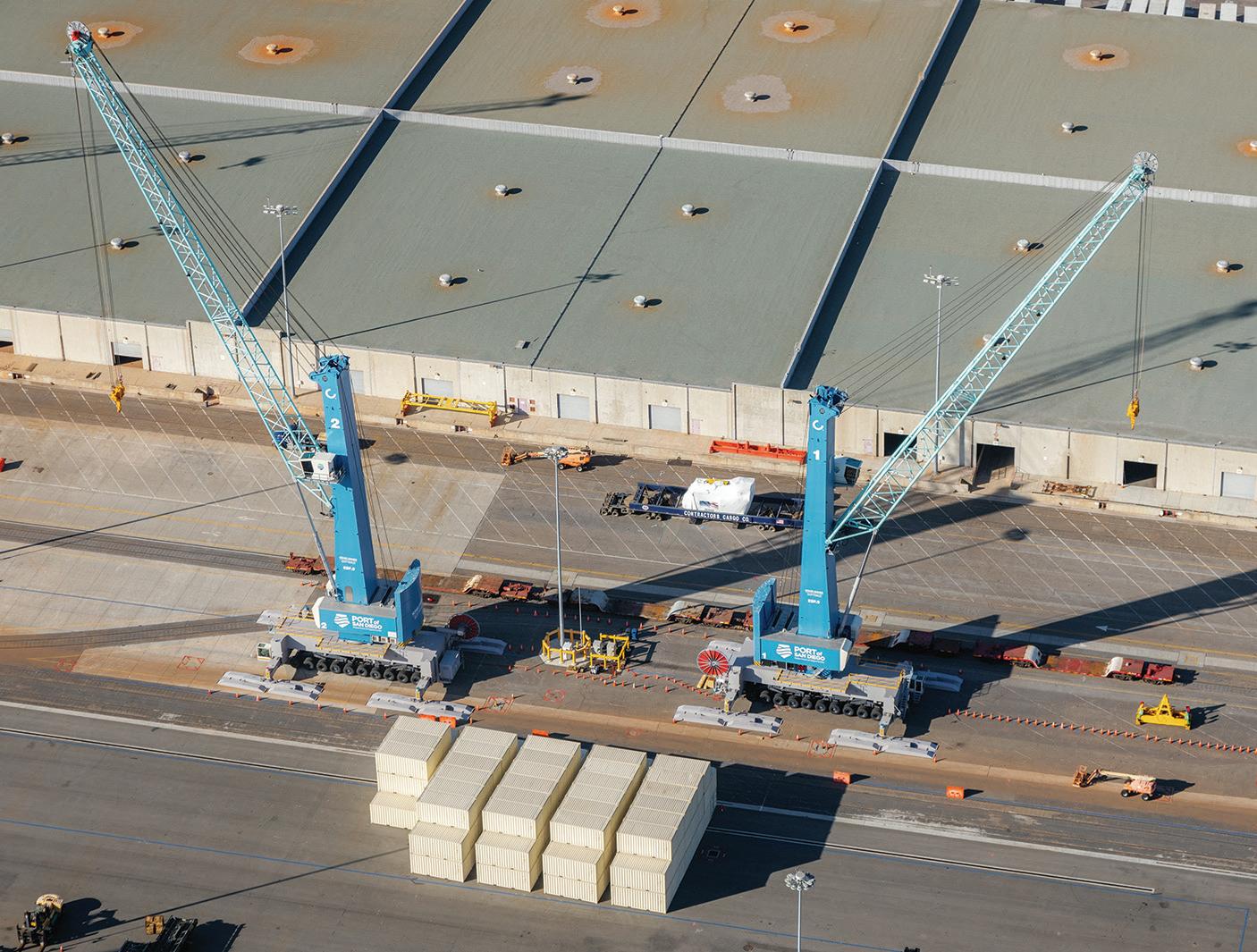
if we don’t pay attention to those pipelines, they’ll dry up and that talent will go elsewhere.
A few other initiatives we undertake include regularly attending career fairs across the county, and we host our own annual People of the Port Career Fair as well as an Open House for our Harbor Police Department. We are also working on an external workforce collaborative with educational institutions and our tenant association, the San Diego Working Waterfront, develop training programs that will help educate our workforce of the future.
PP: Just a few wrap up questions, starting with a forecast of growth trends over the next five to 10 years.
SC: Some of our forecast modeling shows real estate growth at about 10 percent over the next three years, and for maritime industry, about 13 percent over the next three years. Forecasts are always subject to current and future conditions, so we monitor those closely.
I earlier mentioned that we continue to see significant demand for
commercial development around San Diego Bay in addition to development projects already on the horizon that include a mix of hospitality and commercial uses — Seaport Village, East Harbor Island and, of course, Chula Vista Bayfront’s development coming online later this year.
There are also a lot of additional bigticket projects, and we see more opportunities to expand the Blue Economy Incubator program. To date, we’ve launched 10 pilot projects around San Diego Bay that support the Port’s efforts to protect the environment and improve public health. It is the only project of its kind that we’ve seen and we’re well-positioned to attract innovative pilot projects.
PP: What about emerging trends?
SC: The trend of electrification of ports will continue — we’ve already invested significantly with projects like shore power, our all-electric mobile heavy lift cranes, the eWolf tug (the first fully electric, zero-emission U.S. ship assist and escort tug) and the Port’s microgrid at the Tenth
Avenue Marine Terminal which is now fully operational. We also have the Port’s Carbon Capture and Control System — known as “the bonnet” — that is nearing completion. The bonnet system will allow us to capture harmful diesel particulate matter, keeping it from blowing into portside communities.
Technology has now evolved to the point where the benefits are equivalent to or even surpassing the performance of outdated diesel equipment. The Port’s old diesel crane was one of the biggest polluters on our bay and to be able to swap that out with cleaner, greener technology is a benefit to the entire community and demonstrates our commitment to being a green port.
Related to the trend of electrification but specific for the Port of San Diego is our investments in infrastructure. A lot of the infrastructure for our marine terminals and cruise ship terminals was built in the early 20th century. As that infrastructure reaches the end of useful life, we will need to make significant investments soon. As we invest in electrification, we also need to make sure that we can meet the demand for all of the new technology on our terminals, not just looking at current demand, but potential demand in the future.
Sea level rise is a shared challenge for ports. Through efforts like the San Diego Bay Sustainable Shoreline Atlas, we are taking a comprehensive look at the bay’s shorelines and identifying opportunities for more nature-based, habitat-friendly, and engineered solutions to address our vulnerabilities.
PP: Scott, thank you so much – very insightful answers. I look forward to watching you do amazing things at the Port. PP
To learn more about the Port of San Diego, visit: www.portofsandiego.org




As the keynote speaker for the APP 2025 Winter Conference, it was up to Mario Cordero, CEO, Port of Long Beach, to provide remarks that would resonate throughout the coming days. He did not fail to deliver. His message was positive and encouraging, balancing the realities of today’s geopolitical atmosphere with the recognition that initiatives and goals continue to move forward with great success.
“For us as ports, there’s a lot of conversation about current uncertainties,” he said. “But in the global maritime community, there is always uncertainty. Whether this an unforeseen event — like COVID — or current ongoing geopolitical discussions. History tells us that no matter what administration is in place, ports — and trade — will remain important economic engines to those administrations.”
With that introductory note — and adding that the representation of all sizes of ports, as that seen in the audience at the Conference was an important component of the overall discussion — Cordero provided an overview of the achievements and future goals for the Port of Long Beach.
“We always talk about commercial success — and that’s a big component of why we exist as ports — however, I will say that at the Port of Long Beach, our focus at this year’s State of the Port Address was the 20th anniversary of our Green Port Policy,” Cordero said. Introduced by the Harbor Commission in 2005, the Green Port Policy has allowed POLB to create a roadmap that goes beyond dollar signs. “We have a two-prong mandate,” Cordero noted. “One is to
“History
tells us that no matter what administration is in place, ports — and trade — will remain important economic engines to those administrations.”
drive the economic engine that speaks to our success in moving cargo, and the other is our responsibility to an ESG (environmental, social and governance) policy. Both are important —not just in California but globally. And it’s important that the community hear this, understand the efforts behind it, and recognize the beneficial results.”
Cordero summarized the Port’s success with their clean air goals with three numbers: 92 / 71 / 98. Since 2005, the Port’s Air Emissions Inventory found that they have reduced particulate matter by 92 percent; nitrogen oxides by 71 percent; and sulfur oxides by
98 percent. And while celebrating the accomplishments of these milestones, POLB moved an historic record of 9.6 million TEUs (2024).
Cordero’s next slide held pie charts that showed the Port of Long Beach accounting for just over five percent of diesel particulate matter, four percent of nitrogen oxides, and three percent of sulfur oxides in the Greater Los Angeles Area. “We’re ahead of the goals that we set in 2005,” he said, adding that it was “important we give credit to those who are a part of the efforts — the stakeholders of trucking companies and the marine terminal operators who are coordinating with regulators,
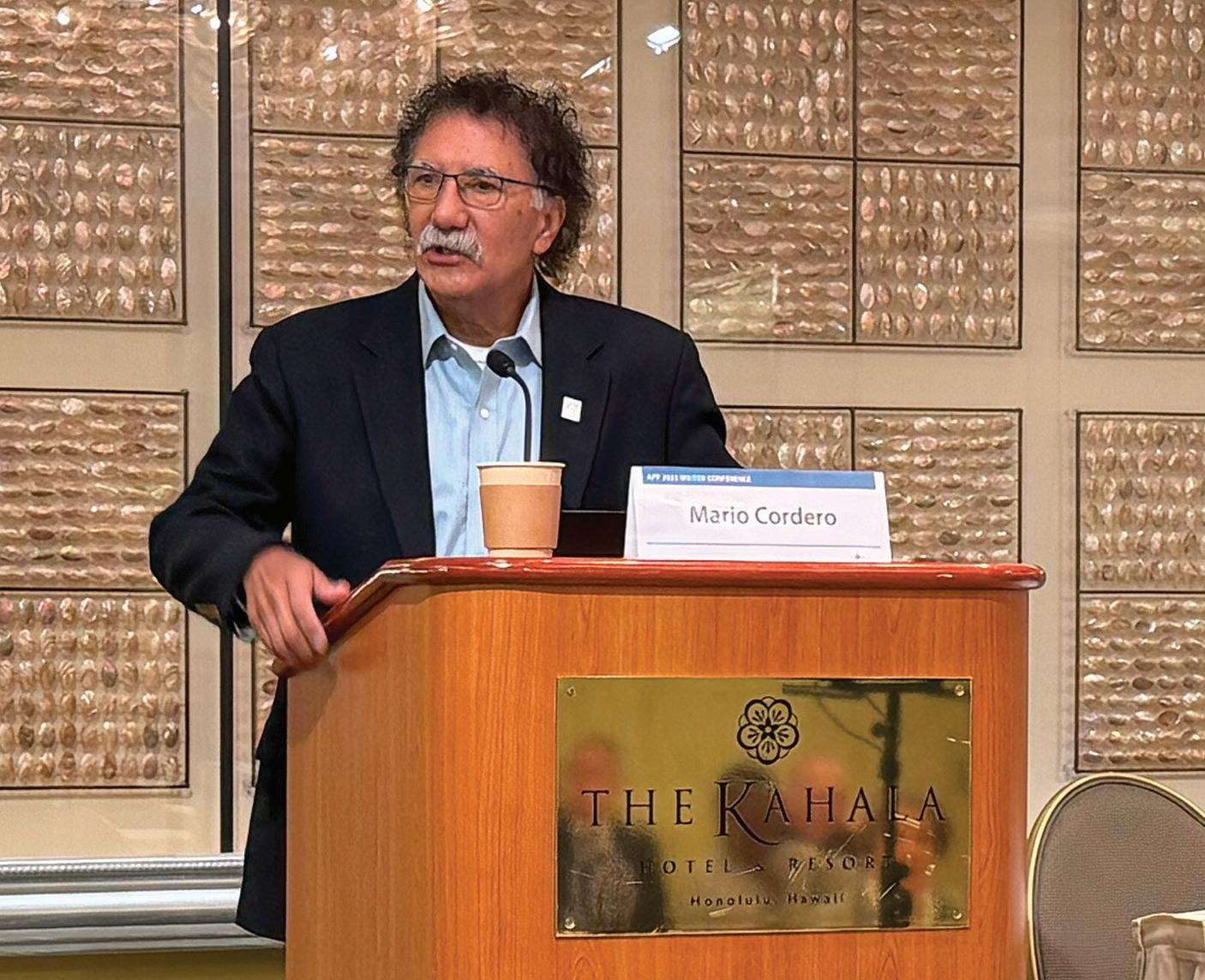

as well as our environmental advocates at the Commission who helped to establish the policy.”
More than just working on air quality improvement, Cordero highlighted how the Green Port Policy allowed the Port to become known for its industryleading clean air, water and sediment programs. “Our environmental initiatives have led to dramatic and documented gains in cutting air pollution, but we’ve done the same in restoring water quality in the harbor, protecting wildlife and natural habitats, recycling and reusing construction materials, and nurturing groundbreaking new clean technologies that are showing ports around the world how to reduce the impacts of their operations.”
Encouraged by the success of the Green Port Policy, Cordero described how it has spawned additional sustainability programs, including Green Shipping Corridors that address the decarbonization of carriers. In 2024, the Port of Long Beach signed two initiatives — one with the Port of Singapore and the other with the Port of Shanghai — with a goal to encourage reduced-carbon ships on major trans-Pacific trade routes. “This aligns with an agreement made two years ago between international shipping carriers and the International Maritime Organization to set a goal of net zero emissions by 2050,” he said, noting
that about 77 vessels are already on order that operate on cleaner fuel technology.
The ceremonies also highlighted the scope of the movement toward decarbonization. “Who would have thought, back in 2005, that we would be at the table with the Chinese Ministry of Transport and Costco Shipping discussing green corridors? This is a global movement and it’s clear that this train has left the station. It may move a little slower in the coming years in Washington, but it will keep moving forward.”
With the help of over $630 million in grants, other initiatives at the Port of Long Beach that continue to advance the goal of zero-emission operations include investing in battery electric and hydrogen fuel cell trucks which includes about 125 charging stations on port lands.
While Cordero believes hydrogen will be a more practical solution for heavy-duty trucks in the future — especially noting the fast advances in related technology — the Port recognizes that, as the transition to zero-emissions continues, their electric power consumption will increase by an estimated six-fold by 2030. To manage this, POLB is embarking on an ambitious plan to help California meet a goal of producing 25 gigawatts of offshore wind power by 2045 with the proposed Pier Wind project, an assembly of floating offshore wind turbines. “It’s an endeavor that will cost about $4.5 billion (in 2023 dollars) and of course, it will require partnerships with all levels of government and the private sector,” he said, adding that while it will be a challenge to fund, considering the need for energy security and given that offshore platform technology is already being implemented in other countries, he was optimistic that the project would be accomplished.
Turning to the future and the looming question of tarriffs, Cordero gave this comment: “We’ve been living with tariffs on Chinese goods since 2018,” he said. “So, whether an additional 10 percent as it relates to China will have an impact, we’ll wait and see but no matter what happens at the geopolitical level, ports will always remain important to any country and any administration so I’m not too worried about it.”
Coming off the busiest year on record for the Port — with 9.6 million TEUs moved in 2024 — Cordero considered this in the context of their Green Port Policy: “In 2005, the naysayers who were opposing the Green Port Policy thought it was going to negatively impact our commercial success. Obviously, that hasn’t taken place.” He backed up his statement with a series of slides reviewing past performance and future expectations. The San Pedro Bay Complex (coupling Long Beach with the Port of Los Angeles) saw volumes upwards of 20 million TEUs in 2024. Forecasts for the next 15 years see this number doubling.
In terms of capital projects, the Port of Long Beach has $2.3 billion in capital expenditures planned for the next 10 years — about $1.3 billion of this will go toward on-dock rail projects. Additional investments include widening the main channel and dredging some of the areas around terminals as well as investing in digital infrastructure, especially the Supply Chain Information Highway initiative that will provide for a data sharing environment for authorized supply chain partners and increase cargo visibility and delivery.
Regardless of the geopolitical climate, Cordero said the Port was “committed to enhancing both our competitiveness and environmental sustainability, and will remain so, no matter the challenge.”
Given that it was still early days for the new U.S. administration, William Paape, Associate Administrator for Ports & Waterways, U.S. Maritime Administration, knew it was routine to await fresh implementation guidance, but he echoed the message from Mario Cordero’s keynote speech given that morning at the APP’s Winter Conference. “Ports will always have an important role to play in any economy because they generate jobs and are a key link in the supply chain,” he said, adding that he appreciated the partnerships that MARAD and APP Port Members continue to enjoy.
“Today, I’m going to provide you with an overview of my office in the maritime administration and where we’re at in terms of addressing America’s most critical missions,” Paape began. “The focus of my office is to collaborate across multiple offices in various lines of effort to promote our nation’s ports and waterways, and advocate
“...we will continue to engage and support U.S. territories and West Coast ports given the importance of the region’s infrastructure needs for domestic and international trade...”
for resources as a part of an integrated national multimodal transportation system. That means ensuring that maritime stakeholders are considered in deliberations for evolving DOT policy planning and funding efforts.”
In addition to Tretha Chromey, Deputy Associate Administrator, Ports & Waterways has 66 positions (56 government employees and 10 contractors) falling within five departments:
• Port Infrastructure Development (“particularly popular with the audience here today”);
• Ports & Waterways Planning (“a great resource if you’re not sure how to proceed or how to leverage other funding opportunities”);
• Deepwater Port Licensing & Port Conveyance;

• Federal Assistance, Education & Engagement (“training, including webinars and training for grant recipients as well as staff”);
• Maritime & Intermodal Outreach (“with Jeff Flumignan who works closely with the 10 regional gateway officers”).
Paape’s next slide provided a more detailed look at the core missions, economy of effort and directed programs of Ports & Waterways (see Figure 1). “This will evolve as the new administration moves forward but we will continue to engage and support U.S. territories and West Coast ports given the importance of the region’s infrastructure needs for domestic and international trade, and national security,” he said.
Focusing in on the relevant gateway offices for APP members, Paape noted that there were two — the Pacific Northwest and Alaska Gateway Office in Seattle which supports Oregon, Washington and Alaska, and the MidPacific Gateway Office, located in California and overseeing activity in California, Hawaii, Arizona, Nevada, and Utah, as well as the U.S. territories of Guam, American Samoa, and the Commonwealth of the Northern Marianas Islands. The offices support waterways planning, including the Marine Highway team that conducts planning activities, stakeholder engagement and provides technical assistance to port and port stakeholders. They also review state freight plans and provide input for the maritime components of those points.
Related to the state freight plans, Paape announced that DOT has recently published a National Multimodal Freight Network (NMFN) which is intended to help states prioritize freight planning and be able to support economic and safety goals. The network currently includes 140 maritime ports and 21,329 waterway miles.
In addition to NMFN report, Paape’s office has also published a report that identifies opportunities for Marine Highway Transportation. “The report focuses on potential actions that MARAD and other federal agencies could take to expand the nation’s marine highway transportation network and leverage new opportunities in these areas.
Paape then went on to describe activities that he and his team have undertaken, including:
• Federal funding support for port capital and investments from 2009 through 2024 amounting to 407 grants representing $6.31 billion in port capital investments across the nation that were leveraged to project costs of $15.42 billion. He highlighted the upward trend in recent years, noting that federal funding has increased substantially since 2019 due to expanded funding eligibility.
• Focusing on the continental West Coast, between 2009 and 2024, the states of Alaska, Washington, Oregon and California received 111 grant awards for a total federal investment of $2.18 billion — 35 percent of the overall $6.31 billion awarded across the nation.
• The State of Hawaii and the Pacific territories are grouped together for the purpose of reporting. Thirteen grant awards totalling $134.3 million were provided to leverage $102 million in non-federal funds. Paape cited examples such as the reconstruction of the main wharf in American Samoa, and funding for operational efficiency improvements for Hawaii.
Highlighting the Port Infrastructure Development Program (PIDP), Paape said the program “provides funding that supports the safe, efficient, and more reliable movement of goods into, out of, or within the port to ensure that our nation’s supply-chain needs — both present and future — are met”. This includes funds that are set aside for small ports as well as those in rural areas to allow them to continue to improve and expand their capacity to move freight reliably and efficiently to support local and regional economies.
The Notice of Funding Opportunity for the PIDP was recently posted —he encouraged attendees to submit their applications for the next funding round by April 30, 2025. Funding of $450 million (and potentially more) has been allocated under the Fiscal Year 2025 Appropriations Act. Another funding opportunity through Ports & Waterways is the United States Marine Highway Program which provides

investments for inland and coastal waterway infrastructure. “Dedicated resources are available to benefit domestic shipping through this program,” said Paape. “This is meant to encourage the use of the capacity that’s available in our nation’s waterways to supplement congested landside routes for freight transportation.” He went on to describe the importance of the Program as a dedicated resource that supports both domestic and international trade with a potential of $15 million available for 2025.
To be eligible for the Marine Highway Program funding, as a prerequisite, the project must be located along one of the five U.S. Marine Highway routes that support the continental West Coast or the three routes that cover the Hawaiian Islands, Guam and the Commonwealth of Northern Mariana Islands, and American Samoa. Since 2019, 13 grant awards totalling $27 million — with an overall $84.2 million project investment — were used for projects such as the conversion of a vessel from diesel to hybrid electric on the Seattle-Bainbridge Island route. Washington State Ferries received $1.5 million in federal funding under the Marine Highway Grant program to contribute to the project that had an overall cost of $41.38 million. The result was a 95-percent reduction in emissions. Other examples of the projects that grants assisted included barge service extensions, a cargo crane project, a cargo operations emissions reductions project, and a cargo diversification project.
Another program Paape highlighted before closing off his presentation fell under the Port Development and Intermodal Planning Office which administers MARAD’s Port Development Program (PDP). Supporting supply chain and resiliency, multimodal coordination, and research and planning, the program is another option that ports may want to consider for assistance with planning activities, stakeholder engagement, or technical assistance. “They will help you look for eligibilities within MARAD, Federal Highways, Federal Rail or other departments where funding opportunities may be available.”
Paape ended his address with words of encouragement: “Your first attempt at applying for funds may not be successful but use that experience to fine tune the application for the next round,” he said. “The success rate goes up significantly on the second or third attempts. So, hang in there and keep swinging the bat.”
In introducing the “Pacific Islands Round Table” session at the APP 2025 Winter Conference, Gus Hein, Gateway Director for the Mid-Pacific Region, U.S. Maritime Administration, provided context: “This panel was something that Jane [McIvor, Executive Director, APP] and I were eager to organize because we’re both passionate about the Pacific Island ports and felt it was important to highlight some of the unique challenges they face — separated by thousands of miles of ocean and, in many cases, with population centres dispersed over numerous islands and residents on each requiring cargo and services.”
Panel members included DreanaLee Kalili, Deputy Director, Hawaii Department of Transportation; Rory Respicio, General Manager, Port Authority of Guam; and Mika Aga, Senior Engineer, American Samoa Department of Port Administration, joining the session via Zoom.
Kalili started off by establishing key statistics for trade in Hawaii, noting that 85 percent of goods used in Hawaii are imported — and 91 percent of that comes through a commercial port. With nine commercial ports across six islands, cargo will first arrive on Oahu where 70 percent is then shipped to neighboring islands. “Ports are the lifeline for our entire State economy,” she said. “I’ve been in this role for a little over two years now and we have been making big strides in addressing issues such as resilience and having a comprehensive plan for sea level rise or any other changing conditions in the environment that would impact our facilities as well as financing identified improvements.”
“Ports are the lifeline for our entire State economy...”
“The impact that we provide for the region can never be understated...”
Kalili also highlighted an additional issue of workforce and labor challenges with expectations that she could lose upwards of 80 percent of her senior managers over the course of this fouryear term. “We don’t have a lot of people coming up through the ranks,” she said. “However, we are fortunate that people from our maritime partners — Matson, The Pasha Group, and Young Brothers — come to work with the State following retirement. We have different benefits that we can offer someone looking for a second career.”
Recognizing that this year marked the 50th anniversary of the Port Authority of Guam, Respicio highlighted the overall contributions of the Port. “The impact that we provide for the region can never be understated,” he said. “Because of geopolitical concerns, Guam is key for the preparedness of the U.S. military to be able to respond to emerging issues. We have been continually updating our Master Plan and currently have a vision for 2025 and beyond.”
Respicio raised the issue of the “Buy American” policy and the difficulty this posed, for example, in procuring gantry cranes which the U.S. doesn’t manufacture. He also noted that workforce and succession planning had been a challenge the Port started to address as far back as 2018. “We identified four crane operators who were going to retire. There was no succession planning in place, so we did on the job training, including crane certification programs
for every single crane operator that we have hired since 2019,” he said, adding that the Port always tries to hire from within to provide for upward mobility and promote the Port’s engagement in workforce development.
Coming into the session via video, Aga reported on major updates for American Samoa. “Since 2022, we have been undertaking a major port modernization project and are currently in the final stages of design. We’ll be looking to issue a bid proposal for construction of the new facilities by next month,” he said, adding that construction of new wharves and improvements to infrastructure were due to great support from federal government partners.
Following those initial comments, Hein asked the panel for their insights on a series of issues.
Infrastructure and efforts to meet both commercial and military requirements
Respicio reiterated the challenges of the “Buy American” requirement however he noted that the Port was working with government departments — including FEMA and MARAD following Typhoon Mawar in 2023 — who were helping to address the situation. He added that it was also an important issue for the Department of Defense in terms of maintaining military readiness and national security.
For Kalili and the Hawaiian ports, infrastructure needs were different. “We aren’t so much focused on
cranes because our private partners are responsible for the equipment that operates on our terminals,” she said. “We are responsible for the baseline infrastructure — for example, ensuring the piers are well-paved, the lighting is adequate, and utilities are accessible for the terminals.” When considering infrastructure needs, Kalili said her department focuses more on the land as opposed to the infrastructure. “We are restricted by the amount of land available, so we focus on opportunities that will develop waterfront property and the best uses for that. When doing that, we’ll need to consider the impact of coastal erosion and sea-level rise and future needs.”
“Prior to undertaking our modernization project, we were faced with seriously aging infrastructure,” said Aga. “The original structures date back to the late 1940s / early 1950s and we don’t generate enough funds for adequate maintenance.” In addition to the one major commercial port, the American Samoa DPA operates five recreational harbors and is responsible for the tugboats, pilots
and operations, and inter-island movements. Revenue is divided between the ports and operations, leaving little for maintenance and upgrades. Aga posited that federal government funding was critical to the Port’s successful completion of the project.
Kalili described a protocol within the department that starts with making sure tenants are prepared and have secured material on the docks, followed by assessing the risks to facilities. “We have exercises to help us prepare for bigger events,” she said, stressing the importance of keeping the port accessible following a significant weather event. “We proactively prepare for both short- and long-term recovery and have taken steps in recent years to make sure we are indeed resilient.” Efforts over the past eight years have included working with both the Coast Guard and the Army Corps to do hardware assessments. Kalili estimates that, at a minimum, Hawaii will need a $2 billion investment just
on piers and piles to fortify key cargo terminals.
With Typhoon Mawar still fresh in his memory, Respicio said that despite extensive damage at the Port of Guam, they were operational within three days thanks in part to successful and proven disaster recovery plans. He echoed Kalili’s comments on the importance of assessment programs as well as support from the federal government. “When it comes to resiliency however, it’s important to understand that we can do everything we can but


Facing the threat of sea level rise, Aga reported that American Samoa was in the planning stages for a port flooding project.
if the equipment is not there to continue with operations, it becomes very difficult to respond effectively. That’s our current challenge.”
Facing the threat of sea level rise, Aga reported that American Samoa was in the planning stages for a port flooding project. “Any new buildings and infrastructure are being built to account for sea level rise. We’ve also been working towards creating more preparedness and response plans, especially with our partners at the local level to ensure a collective effort,” he said.
“There are different types of threats — physical, including natural disasters that we’ve already discussed here but we also face cyber security threats more than ever before given the rise of AI-powered machines and where computers control the majority of all of the work that we do,” said Aga. “Our new Director (Barney Sene) has vast experience in IT and he’s bringing this knowledge and expertise to incorporate into our port right now.” Beyond cyber security, American Samoa is looking at ways to increase surveillance around the ports to thwart the entry of contraband. This includes new screening areas for vehicles and pedestrians along with increased security checks; the installation of new tracking systems for cargo; increasing security features around the port, starting with more security cameras throughout all of the facilities, not just the container yard; increasing training programs for employees so they’re able to respond appropriately to potential threats; and discussing the opportunity to have a Coast Guard cutter stationed in American Samoa.
For the Department of Transport-
ation Hawaii, Kalili said that a lot of the equipment that is tied to an IT network is operated by their private partners. “Our goal is to make sure they are taking the necessary steps to protect their systems,” she said, adding that the Department is tied to the State network which regularly goes through formal assessments of the risks. “Having said that, we have enough redundancies and can do a lot of our operations manually if required.” In terms of physical security, Kalili said that while they have been successful in securing the ports and facilities and have appropriate surveillance systems in place, the issue of intercepting contraband comes to the fore from time to time.
Respicio agreed with the challenges of intercepting contraband and added that part of the challenge is ensuring legislators who may not be familiar with operations understand port processes. “On Guam, we have jurisdiction over the port’s facility security plan, but it is the U.S. Customs Department that has the mandate to inspect containers. “We provide assistance and allow them full access to all port facilities, and we also have identified four acres of prime port property where we they can build a container inspection facility,” he said. While Customs has indicated they haven’t yielded any evidence of significant contraband coming into the port, “we stay vigilant”. Respicio stressed the importance of educating the community so they understand the different responsibilities and how the Port and Customs can work together to address concerns.
Hein turned the conversation back to that of skills training to provide a more in-depth review. Each panel member described various programs
and priorities in this area. Respicio re-emphasized the importance of promoting in-house staff as well as working with workforce development programs through the Guam Community College. Aga described developing programs, especially ones that supplement an applicant’s existing knowledge and skills, including leadership development. Kalili noted that collective bargaining agreements between private partner carriers and the union govern skill requirements but that State employment standards apply for the Port’s administration. She reiterated earlier comments about upcoming retirements and that “sometimes it can take upwards of nine months to fill a vacancy”. “So, there are challenges, especially with finding people with a maritime background, but we engage with programs such as those through the International Association of Maritime and Port Executives to bolster skills.
With only a few minutes remaining to the session, Hein turned to the audience for questions where the issue of the relationship with the U.S. Military and Navy was raised. Both Respicio and Kalili noted that relationships were positive — Respicio noted that Guam’s Master Plan, updated in 2023, provided for a good basis of their work with the military; and Kalili suggested that, with some protocols and assumptions dating back 15 to 20 years, conversations that reviewed standard practices with a goal of updating them would be beneficial for both the State and the Military. Based on the APP exit survey, this was one of the most popular sessions of the Conference. Respondents found the discussions “informative and helpful” and all panelists provided good insight into a diverse range of topics. The continued participation of MARAD in APP Conferences — and especially the efforts for Mr. Hein — was greatly appreciated by all.
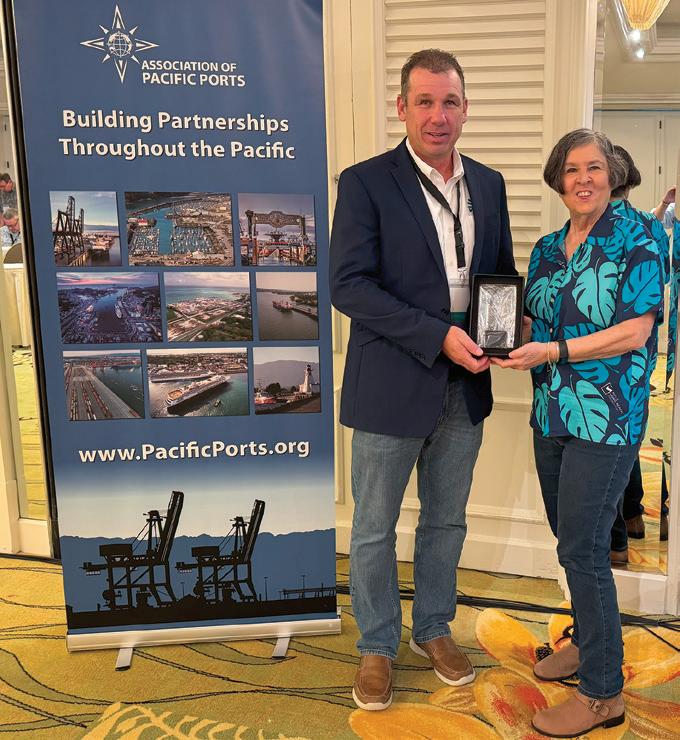
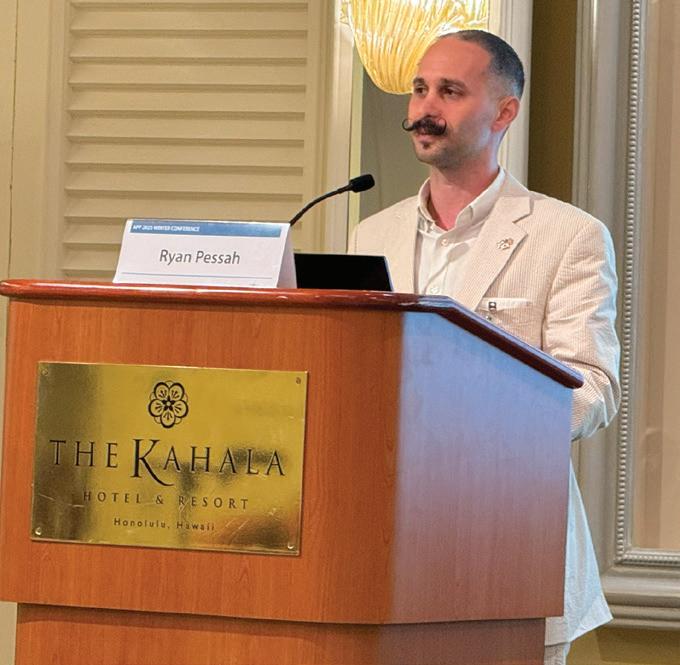
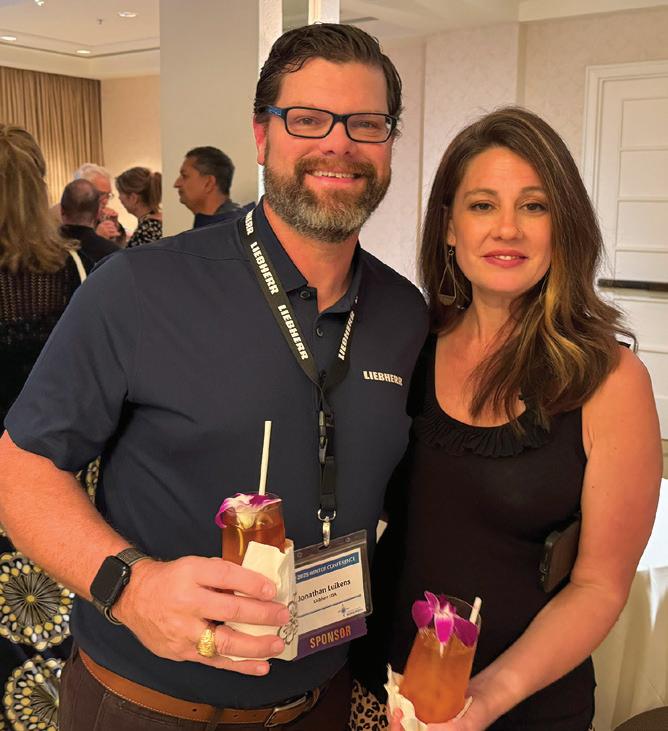
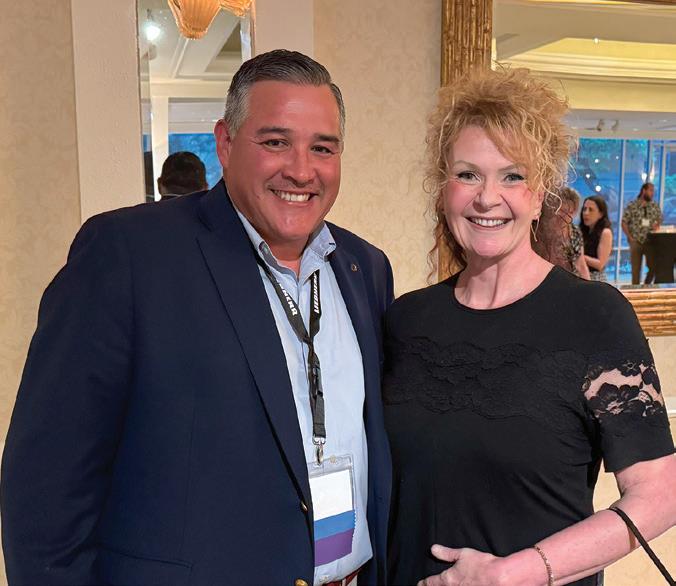


This year’s Port Update Session at the APP 2025 Winter Conference revealed that many ports are facing similar issues — aging infrastructure, challenges to find adequate funding, meeting the goals of environmental sustainability to name a few. But the session also revealed unique and innovative solutions and best practices -- the Blue Economy Incubator to encourage and support new environmental businesses; the Portside Community Academy and Lunch and Learn to engage with local communities; support for vital projects from federal governments, the World Bank, and private partnerships, plus much, much more. Read on for a full update...
Just prior to the APP Port Member update session, representatives from the Port of Long Beach and the Department of Transportation Hawaii held a sister ports agreement signing ceremony. Signatories to the agreement were: Bonnie Lowenthal, Commission President, and Mario Cordero, CEO, representing the Port of Long Beach and Edwin Sniffen, Director, and DreanaLee Kalili, Deputy Director, State of Hawaii Department of Transportation.
“Based on a relationship of mutual benefit, the Port of Long Beach and the State of Hawaii Department of Transportation for Port Hawaii agree to cooperate and establish a sister ports relationship … to formalize a partnership for long-term collaboration … and to promote the exchange of information and best practices for the mutual benefit of both ports,” the agreement reads. Areas of cooperation include environmental sustainability, cargo movement between the parties, infrastructure development, workforce development, and near-port community engagement.
“This ceremony represents another milestone agreement between ports to elevate discussions of common ground,” said Mr. Cordero. “There are many aspects of port operations beyond the commercial side, and it is an honor to be strengthening our collaboration with Hawaii.”
Ms. Kalili was equally honored to be signing this, Hawaii’s first sister port agreement. “We’re excited to partner with the Port of Long Beach, and I look forward to an engaging exchange of ideas,” she said. “The Port of Long Beach is an important connection for both the State of Hawaii and our port system. Thank you for this opportunity. We look forward to the future of this partnership.”
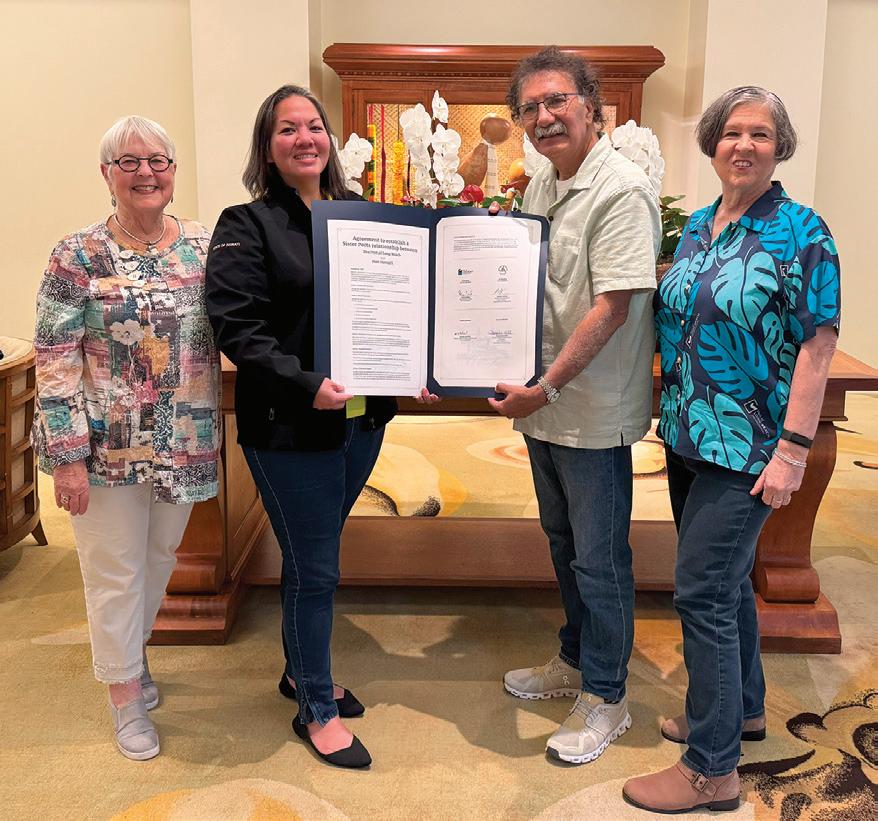
Jerra Cing, Port Manager and Harbor Master for CPA, reported that current activities for the three ports of Saipan, Tinian and Rota includes the development of a terminal infrastructure master plan as well as an assessment (under MARAD) for the expansion of Saipan’s Charlie Dock which is typically used for passenger and military vessels. “The current status of this project is that it’s in the planning phase,” she said. “The second part of the project is to address our channel depth with an intention to dredge so that it maintains an original depth of -40 feet.” Cing further reported that CPA received a Port Security Grant that will be used to upgrade CCTV systems and to connect all three islands to a central system.
Much like the Ports of Guam, Hawaii, and American Samoa, who were part of a panel on Pacific Island issues earlier, Cing noted that funding is a big challenge for CPA. “We rely on federal funding, but we still continue to look at different opportunities to help us enhance and improve our infrastructure, which is aging.”
Tinian’s Port Manager, Antonio Borja, provided additional comments, adding that with only one port on Tinian, he also serves as airport manager. While many of the projects ongoing at Tinian fell under the Department of Defense and he was


hesitant to discuss them without prior approval, he did provide an update on the Divert Airfield which is expected to be complete by 2027.
Providing an update for the Port of Alaska, John Daley started by noting that the Port, while located in Anchorage, was a regional port, serving a vast portion of the State. Main activities include containers and fuel which was especially important for nearby Elmendorf Air Force Base and the Ted Stevens Anchorage International Airport. Much like Hawaii’s ports, the Port of Alaska operates on a landlord/
tenant basis, providing the land and leasing the facilities. Primary tenants include Matson and Tote for container operations.
Daley reported that the Port is in the middle of a modernization program to replace aging infrastructure. The work is being done in phases over a number of years and, currently, about half-way through. “We have completed the petroleum cement terminal, which is a new dock to service both dry bulk cement and petroleum products,” he said. “That was completed a couple years ago for a little over $200 million. So, a substantial project for us. We also have a new administration building
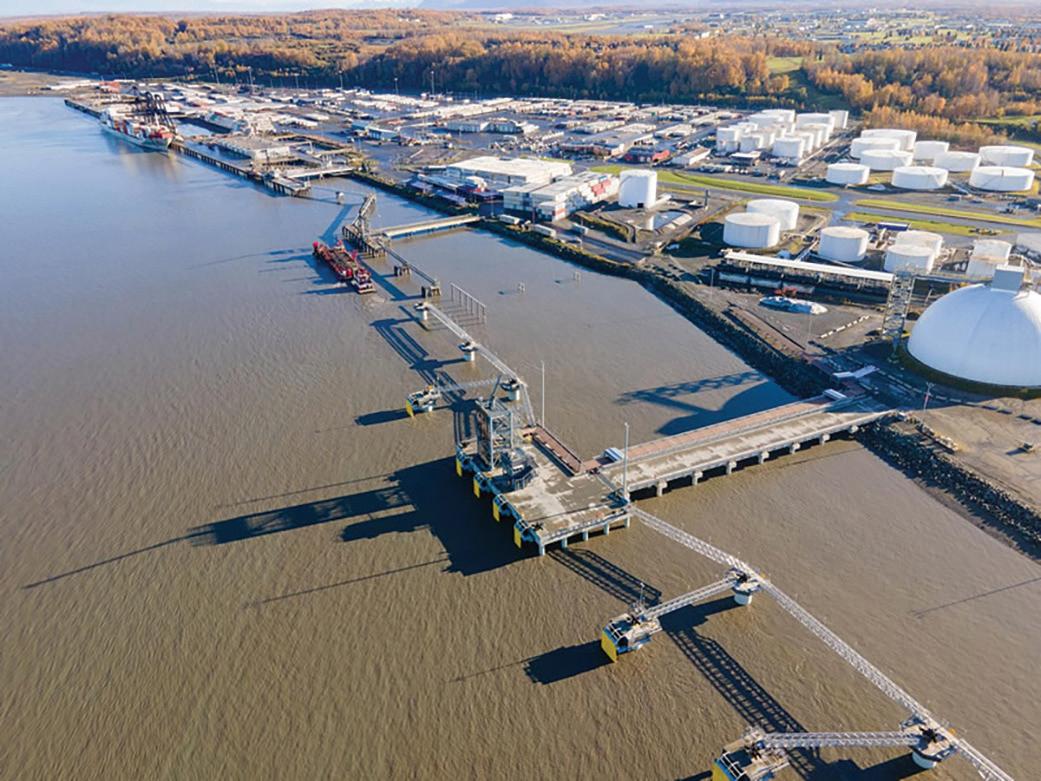
and the old building is being torn down now,” adding that the new office building, costing about $12 million is a state-of-the-art facility.
Other projects underway at the Port of Alaska include the North Extension which involves removing sheet pile to stabilize a section of the waterfront. Daley thanked MARAD for assistance with funding, adding that the project was 75 percent complete. There is also a bid out for a new container terminal which will be a large focus of work for the next few years. Funding for this project remains challenging but Daley was hopeful for a funding for from local, state and federal agencies. Permitting is also a challenge due to approvals required from numerous agencies which is impacting scheduling.
Mike Carter, representing the Port Alberni Port Authority — one of 17 federal Canadian port authorities — echoed earlier comments from other port representatives who were faced with the challenges of aging infrastructure and funding. With a downturn in shipping from the forest industry, Carter said the Port has been able to diversify operations to boost their fortunes. “We’re a small port and only have eight people in our office, but

“Ship recycling does come with its own challenges,” he said. “While there is significant demand for this, the regulations are grey...”
we all wear many hats and have been quite successful in increasing our water lot and land leases. We have also been taking advantage of seafood processing opportunities and in recent years have been able to rebuild one of the old fish plants in town which now houses about seven anchor tenants.” Noting the creation of economics at home, the Port is looking at opportunities to grow this sector.
Additional maritime activities — ship building, repair and dismantling in particular — continue to be part of the Port’s focus. “Ship recycling does come with its own challenges,” he said. “While there is significant demand for this, the regulations are grey and require clarification before this sector of the industry can grow in earnest.”
Noting that a full update on activities at the Port Authority of Guam were previously provided in the Pacific Islands Round Table (see page 22). General Manager Rory Respicio began his update by recognizing Conchita

Taitano, Vice Chair for the Port Authority of Guam. “When she retired from the Environmental Protection Agency, the Governor asked her to join the Port Board to focus on sustainability issues,” he said. “She has worked on the Zero Waste Plan for the Island and that was incorporated into the Zero Waste Plan for the Port but also zero emissions. With all of the data collected, we were able to successfully apply for a $2.4 million Clean Ports Grant. So, it is with gratitude that we thank her for her hard work on this.”
Respicio further highlighted the partnerships with both federal and local partners as well as the business community. “We received a $5.7 million grant through MARAD that came in just in time to assist with the damage done by Typhoon Mawar,” he said, adding a note of appreciation for the work of Bob Salas with LMS Guam. “His efforts allowed us to get much needed equipment on time to fulfill the grant requirements. This wouldn’t have happened without him, and we are grateful for his support.”
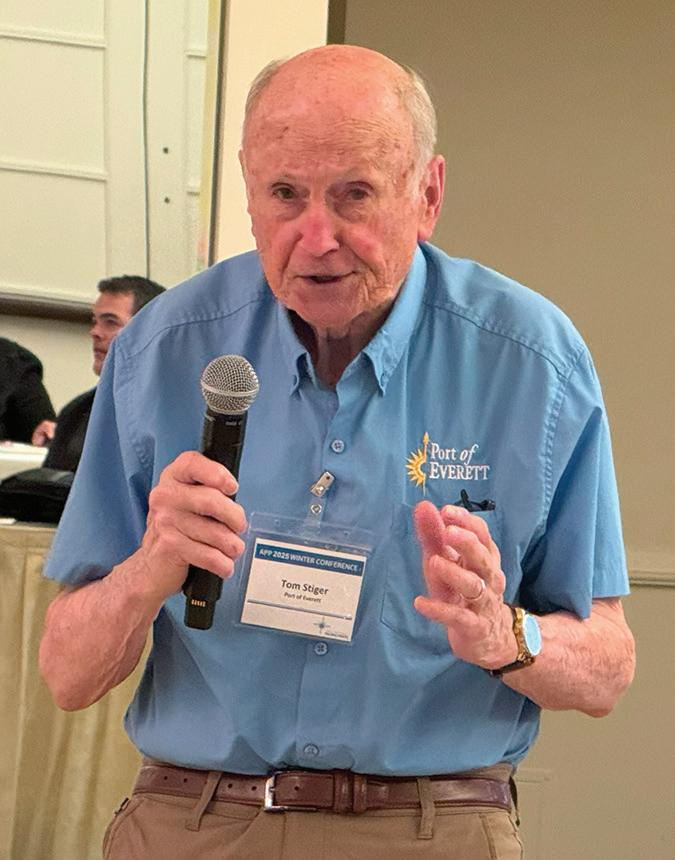
As the APP’s newest Port Member, Tom Stiger, Commissioner for the Port of Everett, provided a primer to bring attendees up to date on activities at the Port of Everett. “The Port of Everett is one of 75 port districts in Washington State,” he said. “We have three main lines of business including an international seaport, a 2,300-slip marina and more than 3,800 acres of real estate. We are known in the international shipping community as the home to Boeing and Naval Station Everett. In addition to our seaport, we are working on a billion mixeduse redevelopment that includes retail, restaurants, office, and housing.” He closed by saying that he was glad to be a member of the APP and, given that most of the Port’s trading partners are located in the Pacific, he looked forward to working with both Port and Associate Members.
CEO Kristin Decas began by acknowledging Port of Hueneme Commissioners Jason Hodge, Celina Zacarias and Mary Anne Rooney who were in attendance. She also expressed appreciation for the work of Letitia Austin, Public & Government Relations Officer, and legal advisor Ruben Duran, BBK Law, who were also in attendance.
Decas provided some highlights of activities at the Port of Hueneme, including strong cargo numbers. “We’re up about 80 percent over the last decade which translates to over 265,000 TEUs,” she said. “Considering that 10 years ago, we didn’t move containers but rather had everything move by break bulk, we’re very pleased with our re-energization and modernization efforts.”
The Port is currently upgrading their facilities, including the expansion of container areas, acquiring new


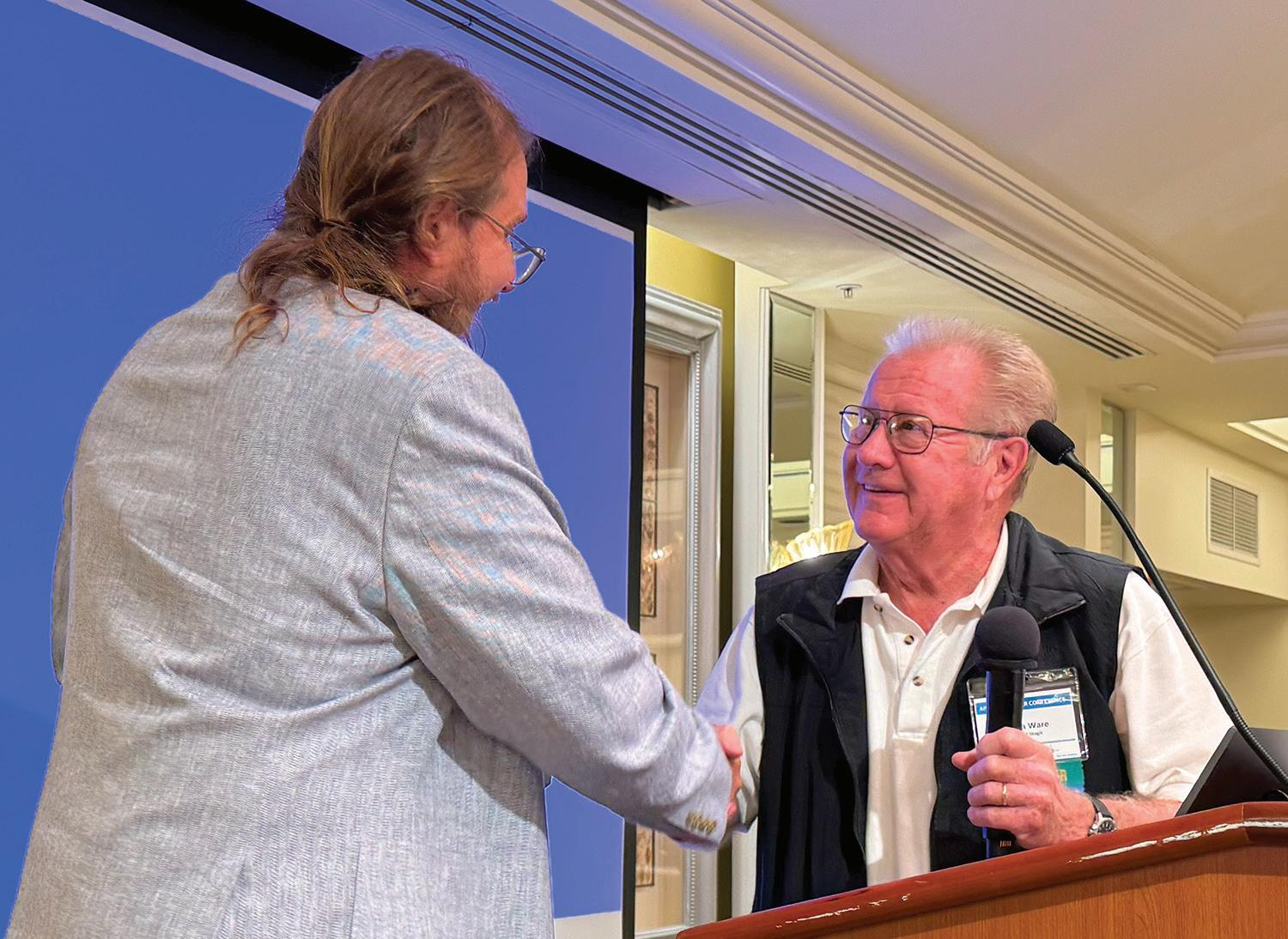
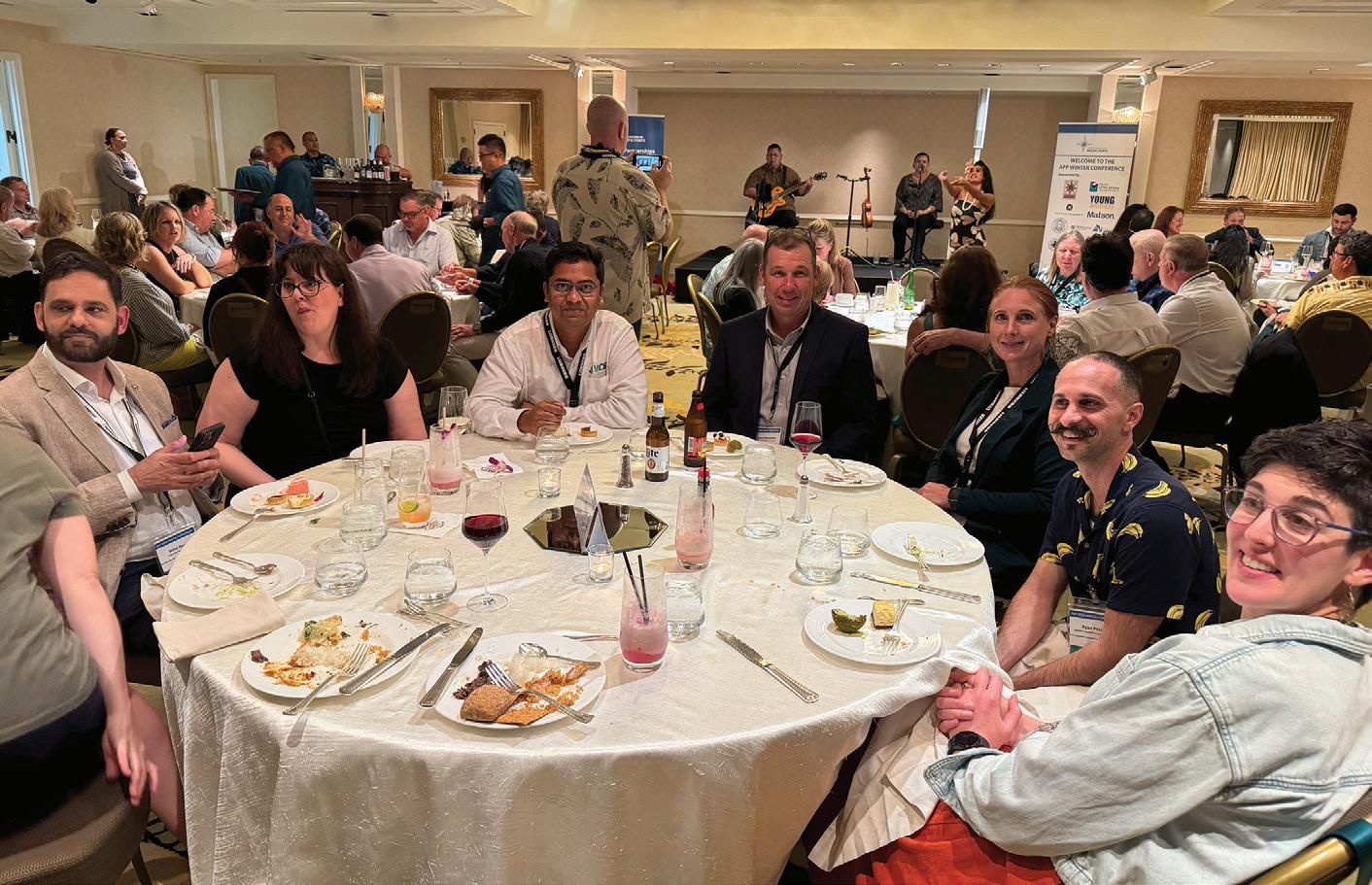



cranes and looking at building a parking structure. A grant from MARAD has assisted with engaging an engineering firm to develop plans for a staging or parking structure for automatic cargo. “This would be the first port in the country to have this kind of facility which would assist in managing the roughly 415,000 cars that move through our Port.”
Ranked fifth in the Nation for refrigerated cargo, Decas referred to the Port of Hueneme as the “king and queen of bananas” – moving five billion bananas in addition to a significant amount of blueberries.
As the recipient of a $43 million EPA grant award, the Port shares the priorities of the Port of Long Beach in terms of moving towards zero emissions. “Our goal is to get to zero by 2030 in terms of all of our handling equipment as well as having vessels plug in at berth. While these are ambitious goals, the EPA grant will help move this forward and we’re excited to be moving in that direction.” She added that the Port of Hueneme is a strong advocate of addressing climate change and the challenges it presents.
In closing, Decas touched on one challenge that the Port faced last year: “About a year ago, we received five inches of rain in one hour. It was very localized to our community and disabled our shoreside power system used for our cranes. What was $14 million to build 10 years ago is now $40 million to repair,” she said. “So we have come together as a Port, and as a community with our elected officials and we’ve been able to secure $36 million from the State through emergency relief to be able to rebuild the system.”
In the interim, the Port has a bonnet system that caps vessels to capture emissions to allow them to comply with current rules and regulations. and then the Internet. “So, despite the setback, we’re moving forward and will meet our zero-emission goals. We’re also planning to make sure this doesn’t happen again.”
President of the Port of Long Beach Harbor Commission, Bonnie Lowenthal, first recognized her colleague Sharon Weissman, who is the Port of Long Beach APP representative. Noting that CEO Mario Cordero provided a succinct update on activities at the Port of Long Beach during his keynote presentation earlier, Lowenthal provided additional insight. “The first thing I want to say is, as Mr. Cordero mentioned, this year is the 20th anniversary of our “Green Port” strategy. You have to understand how radical that was at the time,” she said. “We were challenged to be the first because the community was demanding change and at the same time, there was a tremendous amount of research coming out of USC and UCLA that explained the detrimental effects of poor air quality on our bodies.
“I remember attending a meeting where one of the researchers talked about how the particulate matter

changes the cellular structure of our lungs. It was that moment for me where the way forward just crystallized.”
As a member of the City of Long Beach Council at the time, Lowenthal recalled hearing about shore power for cruise ships in Alaska and added an item to the agenda to suggest that the Port begin to look at shore-side power. Following a trip to the Port of Hueneme’s Naval Base, where many of their vessels plugged in to shore power, the Port of Long Beach began to work in earnest on moving toward a green port.
The second issue Lowenthal raised was the importance of the APP. “We are all very different, but we must get together to work together. That’s our commitment here — we’re not only a sister port with Hawaii, but we’re also really sister ports with each other,” she said, referencing the earlier Sister Port Agreement Ceremony. “We all must help each other. I know Port of Long Beach happily takes your calls, your visits. We want to share the information that we have.”
Port of Nanaimo Board Chair Donna Hais recognized her fellow board member, Shiva Dean, as well as

CEO Ian Marr, both in attendance. Her first comments were to express her excitement and enthusiasm that the Port was hosting the APP’s 111th Annual Conference in August. “As I heard during this morning’s presentations, being an island port has several challenges. What it specifically means for us is that, with Vancouver Island’s population reaching almost one million and growing very fast, we have to be very efficient and very diverse.”
Hais reported that the Port was days away from putting shovels in the ground for a significant container terminal project. “This project is being done in partnership with the Snuneymuxw First Nations,” she said, adding that she hadn’t heard much discussion at this conference about the importance of First Nations, “but that’s a fairly important component in Canada, under the United Nations Declaration on the Rights of Indigenous Peoples, that we have partnerships with our First Nations. The project at Duke Point will see the Port’s container activity go from
roughly 20,000 TEUs to 280,000 per year. Construction is expected to last for two years. “Similar to what I’ve heard from other ports, funding has been a challenge — roughly half of the $120-million project comes from government sources with the remainder raised through private partnerships and the partnership with the Snuneymuxw Nation.
In a parallel program, the Port undertook a study on the future growth potential for Nanaimo. With the report recently completed, an additional phase for expansion will get underway following completion of the current project and will increase capacity to 1.2 million TEUs. “We are on an upward trend and see a great opportunity for the Port of Nanaimo to provide greater trade opportunities for Canada as a whole.”
Hais further reported that the Port of Nanaimo was the first port in Canada to transfer LNG from truck to vessel with that vessel then travelling to the Port of Long Beach. “We’re very excited to be the first port in Canada to do that and we’re just working on our second occurrence of that to happen here shortly,” she said.
Nanaimo is also home to the most BC Ferries locations in British Columbia. “We have four BC Ferries berths as well as three aerodromes, one of which overlaps with our airport which includes seaplanes, and a helicopter terminal,” she said, adding that Nanaimo recently celebrated the oneyear anniversary the Hullo Passenger Fast Ferry which moved over 400,000 people in their first year of operation.
“There are a lot of ways to get to our community, and, when you visit us this summer for the APP 111th Annual Conference, I encourage you explore some of the more scenic alternative routes. We look forward to your visit.”
Paula Miranda, Executive Director, introduced the Port of Newport by noting that they are one of the three deep water ports in in Oregon and is home to one of the largest fishing fleets on the West Coast and a large fishery sector. “One area of focus has been on growing cargo,” she said. “We received funds through MARAD’s Port Infrastructure Development Program for equipment that will help us attract more cargo.” She added that,

like representatives from other ports have already indicated, funding continues to be a challenge.
One of the main projects currently underway is the rehabilitation of their commercial dock. “We have problems with our aging docks — it’s been estimated that the dock has about two more years of life before failing which would mean losing a lot of our fisheries,” she said before going on to describe efforts to raise the approximately $35 million for the project. Although the Port received $9.5 million from the State of Oregon Department of Transportation, they were not successful in federal grant applications so are trying again and just applied to the U.S. Department of Transportation. They will also try again with the PID Program.
Another challenge facing the Port of Newport is to keep the Pacific Fleet of NOAA who will be putting out a Notice of Information later this year. “We’re hoping to keep them here as they’ve become a big part of our community,” Miranda said.
Miranda also reported that the Port has been dealing with dredging which is getting more expensive every year. Five years ago, they paid $300,000 — that cost is closer to $1.2 million now. “Dredging is required for both the NOAA berth as well as our recreational marina and costs continue to rise in part due to many new environmental requirements. Again, funding for this continues to be a challenge but we’re moving right along.”
Port of Redwood City Commission Chair Stan Maupin provided the update for the Port of Redwood City, beginning by noting that the Port serves Silicon Valley for dry bulk, primarily construction materials, and then scrap metal for recycling. “Last year, we did $10.3 million in revenue,” he said. “Our numbers

continue to rise since COVID, and we moved 1.83 million metric tons of cargo. Again, an increase in volume.”
Maupin praised staff for their work, adding that a major accomplishment this past year was getting concurrence from the U.S. Army Corps of Engineers to dredge their channel annually. “We were on a biannual cycle for a long time, and it just was not enough so we’re grateful to have the USACE provide dredging annually now.”
Another win for the Port was the award of a $1.9 million grant through the Environmental Protection Agency’s Clean Ports Program. The funds will be used to work on emissions inventory and alternative fueling. They also received $750,000 from their local congressman to provide for some much-needed capital improvements as well as their annual port security grant.
The Port is very close to getting their first ferry. “We are proud to really be pushing forward,” said Maupin. “If
you look at the map of San Francisco Bay, currently, ferry service only comes down to South San Francisco. There’s a huge hole in the South Bay. We’re excited to be getting a ferry terminal and service from Redwood City up into San Francisco and Oakland in the East Bay. This will be a great benefit to many of the businesses in the South Bay.”
He further reported that the entrance to the Port has become a choke point, and they are working with the City on an upgrade to the existing interchange. With a budget of $360 million, when complete in about three years’ time, the interchange will provide for much greater efficiency in handling cargo.
Maupin touched on workforce development, noting that the Port was surrounded by equity priority communities and was actively working to develop recruitment strategies to encourage careers in the marine industry.
He added that community outreach included a ‘Lunch and Learn’ where the public, including local businesses, are invited to learn more about the Port. Additional community events include ‘Rock the Dock’ and free concerts every weekend from March to November, an annual drone show to kick off summer, and Port Fest.
In wrapping up, Maupin reported that the Port brought on three new commissioners this past summer. “Out of five commissioners, that makes that makes me the senior board member with two and a half years of experience,” he said. “Kristine does an incredible job guiding us and we’re excited for the next chapter of moving forward.”
On behalf of the Port of San Diego, Tracy Largent, Chief Financial Officer, began by highlighting their environmental sustainability achievements, including the commitment of over $200 million by the Port, its tenants and service providers on electrification of maritime facilities. They were recently awarded a grant from the EPA for $59 million for their San Diego Clean Cargo Project which will further electrify operations at their
“It [Blue Economy Incubator] demonstrates a new and unique procurement pathway that helps support these innovative projects and benefits the environment...”
two cargo terminals, furthering their goal of zero-emission movements. Contributions from the Port, the San Diego Air Pollution Control Board, Dole, Sky Charger, and SSA Marine brought total project funding to $86 million.
Largent then introduced new CEO Scott Chadwick (see page 12 for a full interview with Mr. Chadwick) who recognized Commissioners Sid Voorakkara and GilAnthony Ungab, two of seven who make up the Port’s Board (three from San Diego and one from each of the remaining cities that are part of the Port District).
Chadwick described initiatives such as the Portside Community Academy — a robust program aimed at allowing community members to learn more about the Port. “They effectively become ambassadors for the Port,” said Chadwick. “They have a better understanding of port operations and community benefits.”
Like the Port of Hueneme, the Port of San Diego has an ambitious strategy to get to zero emissions. “We recently

acquired two electric mobile harbor cranes, replacing one of the largest polluters of our maritime operations,” he said, adding that the Port is also the first in the U.S. to have a 100-percentelectric tug (the eWolf). They also have micro-grid infrastructure for the Tenth Avenue Marine Terminal and shore power for cruise ships and oceangoing vessels. “This is another of our electrification projects at our terminal, the solar-powered microgrid provides power for facilities including security, infrastructure, lights, offices and the existing jet fuel storage system. So far, we’ve seen a 60 percent reduction of energy costs at the terminal.”
Handing the mic back to Largent, she touched on the Blue Economy Incubator, launched in 2016, which invests in early-stage companies that focus on environmental sustainability. “It demonstrates a new and unique procurement pathway that helps support these innovative projects and benefits the environment at the same time.”
Other initiatives underway at the Port of San Diego include the new 535-acre Chula Vista Bayfront Project with the Gaylord Resort and Convention Center and the Freedom Park Project at Navy Pier which will enhance the waterfront by adding more park space on the pier next to the USS Midway Museum.
Commissioner Kevin Ware, reporting for the Port of Skagit, advised attendees of the passing Commissioner Steve Omdal in September last year (those who attended the 110th Annual Conference in Kaohsiung will remember Steve and his wife Kathryn).
Omdal was a longtime Port of Skagit Commissioner, first elected in 2012,

and Ware described how, in addition to having a passion for jobs creation, particularly in the manufacturing sector, Omdal’s business background and his fresh ideas for economic development opportunities were a great benefit to the Port.
Ware then described the process the Port undertook to find a replacement. Following established (but never used) guidelines, the Port advertised that a position on the Commission was open and requested those interested to submit their resume along with a cover letter explaining why they wanted the position and what benefits they would bring. Following interviews with the two remaining Commissioners and Port of Skagit staff, a decision was collectively made to invite Melanie Mankamyer to serve out Omdal’s remaining term which will come up for election in November 2025. Mankamyer, the first female Commissioner to serve for the Port District in its 60-year history, is a newly retired Professional Engineer with 28 years of experience as a civil engineer, providing her with vast experience in public works projects, developing long-term capital improvement plans,
Ware cautioned other Commissioners in attendance that a common mistake when going through the process ... is that they might be tempted to “find a buddy...”
conceptual project plans and budgets, all of which are relevant and significant to the work of the Port of Skagit.
The entire process took less than 60 days. “In Washington State, the law requires that, if a Commissioner dies in office, the remaining Commissioners have 60 days to find a replacement,” Ward said. “It they can’t decide, it becomes the responsibility of the County Commission to find a replacement. And if they can’t decide, the Governor will be asked to choose. So there is incentive to get the process done quickly.”
Ware cautioned other Commissioners in attendance that a common mistake when going through the process of finding a replacement is that they might be tempted to “find a buddy based on that. This isn’t in the best of interest of the Port — it’s a decision that must be considered carefully.”
Having gone through the full selection process in such a quick timeframe, including the development
of qualification criteria, questions for interviews and evaluation forms, Ware was happy to share if any other Commission was interested.
Jeff Wingfield, Port Deputy Director, first introduced the Port of Stockton’s Board Chair, Bill Trezza, and Commissioners Allen Sawyer, Anthony Barkett and David Atwater as well as Port Director Kirk DeJesus and Deputy Port Director, Administration Katie Miller.
With a portfolio made up mostly of dry bulk, liquid bulk and break bulk cargo, the Port of Stockton is located about 70 miles east of San Francisco on the San Joaquin River. “We’ve been extremely busy over the past few years developing many projects,” Wingfield said, adding that new projects included a Home Depot distribution center as well as a soda ash export facility. “We’re excited about these two projects plus the impending completion of the Port’s



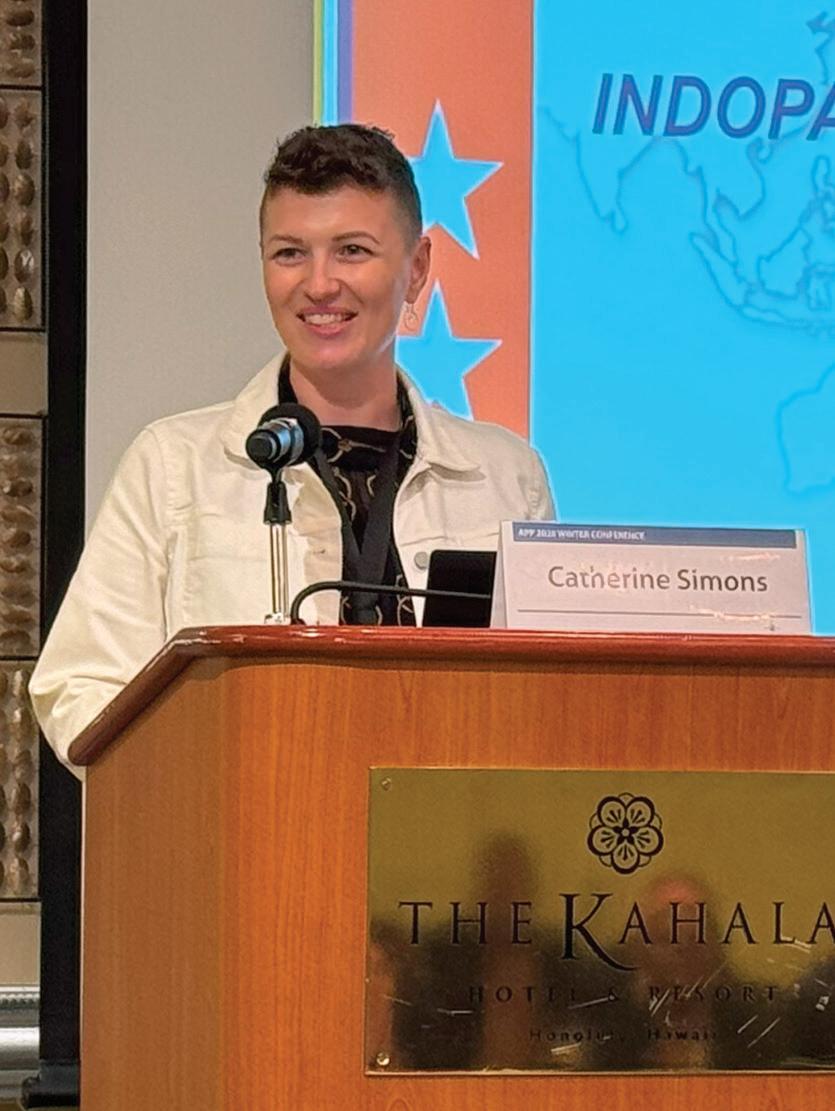
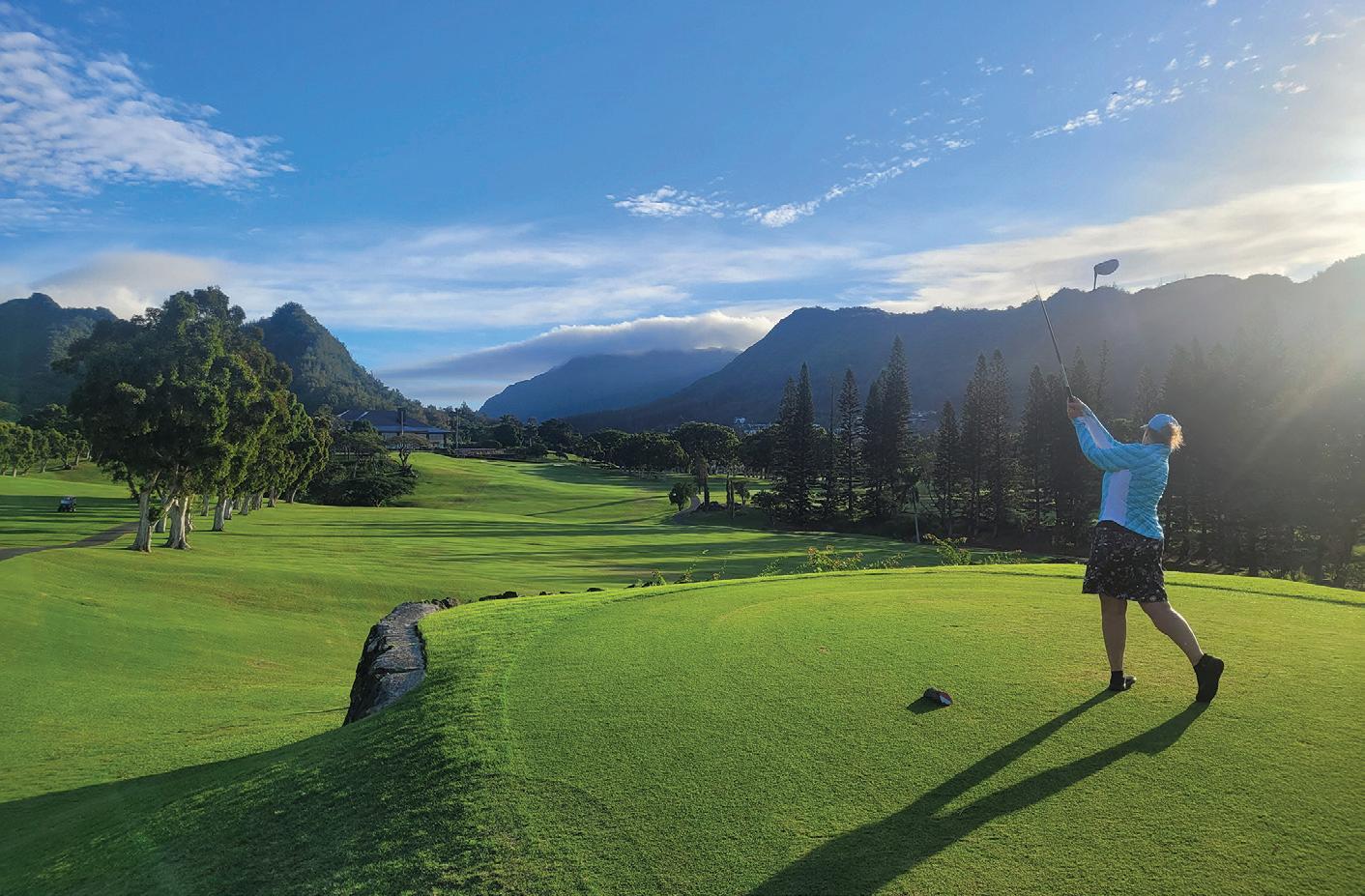



first new berth construction in about 50 years. Again, a very exciting time for the Port.” He noted that renewable fuels and feedstocks have been a big growth sector for the Port over the past few years.
One infrastructure needs issue that the Port is addressing currently is rail. While they have roughly 75 miles of rail on their facility, more is needed to maintain efficient goods movement. Funding through the State of California has been helpful but Wingfield noted that construction and
material prices have significantly escalated, and they are now seeking additional federal funding to narrow the gap.
The Port of Stockton has put a lot of effort into environmentally sustainability, noted Wingfield. “We just received a $110-million EPA Clean Port Grant, which will be transformational for the Port. Currently, about 50 percent of our cargo-handling equipment is zero-emission — this grant will increase that to about 96 percent.” Wingfield noted the Port’s
commitment to reducing air emissions extended to other efforts such as development of a Clean Air Plan, electric-vehicle blueprint and emission inventories. “We then go about finding funding to help implement zero-emission technologies that will help reduce impacts on our community,” he said.
Kim Puzey, General Manager, provided an update on activities for the Port of Umatilla. The Port is located on River Mile 292 on the Columbia River in the State of Oregon. It is the largest port geographically, encompassing 3,200 square miles and 12 incorporated municipalities.
Puzey described the evolution of the Port over the past 30 years, noting that “the region used to be Industrial Agricultural at that time — we were the largest onion producer in the world and our export of potatoes to foreign markets rivalled that of Idaho.” Today, while still heavily involved in Industrial Agriculture, the Port also focuses on imports of diesel fuel and exports of wheat.

In about 2010, the Port was approached by a group looking for land to build a data center. The Commission agreed to provide them with an area that was predominantly basalt, contingent on them extending the water and wastewater lines. “The agreement was executed, and we now have a data center that provides training and opportunities for young people from our communities,” Puzey said, adding that graduates are finding wellpaying careers that they would otherwise not be qualified.
Andrew Doherty, Port Operations Manger, first noted that the Port of Valdez has a robust seafood industry, but that industry experienced one of its lowest returns of Pink Salmon in Prince William Sound in the past 50 years. “Due to the Port’s diversification efforts, we were able to generate positive revenue,” he said, referring in part to the Port of Valdez’ support of the oil and gas industry from the north slope on down the pipeline to Valdez.
Doherty echoed comments from earlier updates of ports who were dealing with aging infrastructure. Valdez recently experienced issues with their dolphins and piles that had a major impact on the cruise industry. At the beginning of this year, the port began work to make major improvements, finding either a shore-based dolphin or some other marine-based dolphin. He added that, in Alaskan waters, the permitting process can be challenging. Longer term, the Port of Valdez is trying to find a way to get larger cruise ships into the downtown district to facilitate easier movement of passengers.
Other initiatives in the past year included securing a public-private partnership to improve a barge landing craft for a portion of their container terminal. “We were able to get that project done

...while the Port may be small in comparison to others, it is a vital link for not only the community but the State of Alaska as well.
in a much faster timeline because of the private partnership,” he said.
Doherty closed by noting that Valdez was a small town with a population of about 4,000 and while the Port may be small in comparison to others, it is a vital link for not only the community but the State of Alaska as well.
Zoya Tayag, Deputy Director for RMIPA, noted that her update would be similar to others who were experiencing challenges related to aging infrastructure and funding constraints. “Our docks were built in the 1980s and early 1990s and we now face the threat of sea level rise,” she began. “We’re a small country of 54,000 and 95 percent of our food comes through the seaport, the need to address the infrastructure is an important one for the Republic.” Tayag added that with most of the land being privately owned, securing public land for growth was a challenge.
In addition to managing the seaport, RMIPA manages the airport, which, Tayag reported, had received some renovations and expansion to the runway and arrival areas, and anticipates building a new terminal starting in 2026.
In 2020, RMIPA secured a $33-million grant from the World Bank to be used for seaport renovations and upgrades. However, given the timing and the onset of the pandemic, there were challenges in bringing people to the Island to conduct needs assessment as well as procurement of items. “We did manage to procure a few things such as navigation lights and a generator,” she said, adding that, as the Deputy Director, she was tasked with networking to learn about funding opportunities and best practices.
Tayag also noted that RMIPA Board of Directors has approved a potential Marshall Islands Maritime Investment Project (MIMIP) II Project under the World Bank International Development Association (IDA) funding cycle. The objective of the project
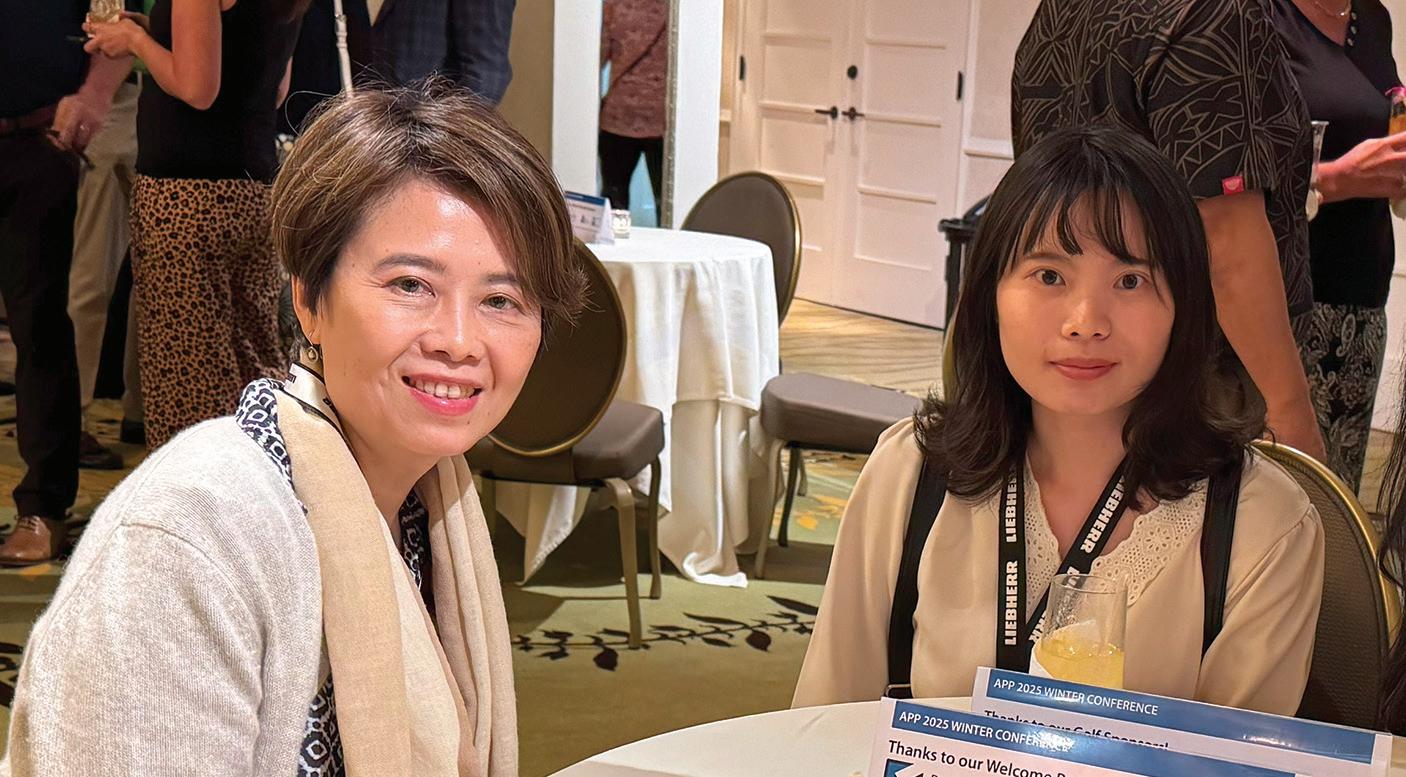
Referencing Mario Cordero’s presentation earlier in the day, Chen agreed that digitalization is a trend for many ports and TIPC has been actively working on digital and sustainable transformation.
will be to improve the safety, efficiency and climate resilience of maritime infrastructure and operations.
Justine Chen, Senior Deputy Director, introduced her colleague, Emily Li from the Department Marketing Planning Port Business Section and added that she was providing an update on behalf of Dr. Lee, Chairman of the TIPC. “First, I would like to extend our appreciation to APP Members for joining us in Taiwan at last year’s Annual Conference,” she said. “We enjoyed our time with you — I hope you enjoyed it too.”
Noting that TIPC was responsible for managing seven international commercial ports in Taiwan and that the figures she would be providing were a total for all ports, she recapped TIPC’s performance in 2024. “TIPC enjoys continuous stable growth in our core
business areas as well as progress in new business areas such as off-shore wind, waterfront development and cross sector investments.”
Looking at 2024, Chen reported that all metrics were very positive. Revenue was at an all-time high, with cargohandling volumes (about 700 million revenue tons) and container-handling volumes (about 14 million TEUs) both seeing increases over 2023.
Of note in 2024, the Evergreen Terminal 7 in the Port of Kaohsiung began full operations. It features five deep-water wharfs capable of concurrently handing up to four 24,000-TEU A-Class container ships. Features of the Terminal include automated container yard operations with remote monitoring centers. “It is expected to enhance our annual handling capacity by up to 6.5 million TEUs in the future,” Chen said. “In the meantime, TIPC has launched short-term incentive programs to increase transhipment
volumes.” She added that the goal was to develop Terminal 6 and 7 as a hub for ocean-going shipping lines.
Referencing Mario Cordero’s presentation earlier in the day, Chen agreed that digitalization is a trend for many ports and TIPC has been actively working on digital and sustainable transformation. “Last year, we focused on intelligent monitoring and AI technology — we have implemented a ship navigation aid system to enhance safety and AI image recognition technology to shorten the waiting time for vehicles in the port areas”, she said. “And we have equipped all of our ports with an intelligence power management system to enhance energy efficiency and installed solar equipment in Container Terminal 4 and 7 to increase our usage of green energy.”
Additional initiatives include the construction of heavy cargo terminals in Taichung to prepare for the future development of the offshore wind farm industry. Furthermore, TIPC launched green port incentive programs to encourage shipping companies to utilize low carbon fuels and automated handling equipment. “We prefer to use incentives to encourage companies to make better choices regarding the usage of carbon fuels and the use of shore power,” she said, adding that a total of 11 highvoltage shore power berths have been installed at TIPC’s ports, aligning with the Taiwanese government’s netzero policy. “TI PC has set a goal to reduce carbon emissions by 50 percent by 2030 and achieve net-zero emissions by 2050.”
Before closing, Chen reported that last year, Taiwan Ports accommodated 418 cruise ships with over 900 thousand passengers, rebounding strongly from the pandemic years. She extended an invitation to attendees to visit Taiwan again by cruise. “We look forward to welcoming you in the future.”








By Tom Ewing
Last August, MARAD released a report titled “A Feasibility Study on Future Energy Options for Commercial Harbor Craft Operating in California.” The 190-page Study was written by the American Bureau of Shipping (ABS), under contract for MARAD. Its focus is harbor craft — offshore tugs and harbor and articulated tugs. The Study seeks to assess where those vessels stand regarding alternative fuels.
Ports, of course, are inextricably linked to vessels. Indeed, while harbor craft get most of the Study’s attention, one chapter focuses on portrelated issues, more specifically, at 12 California ports. (See table below.)
A close look
ABS’ research started with a survey of port officials and was followed up with interviews. The Study focused on five key areas:
• Port characteristics
• Available bunkering fuels
• Electrification infrastructure with an emphasis on renewable energy sources
...large vessels primarily rely on third-party services for refueling, utilizing ship-to-ship transfer via barges, or truck-to-ship operations from shore.
• Shore power capabilities, and
• Planned sustainability initiatives.
“Port characteristics” presents a descriptive profile for each port, referencing land area, for example, and berths and vessel size capabilities.
The next four topics provide a closer look at renewable energy issues — existing capabilities and upcoming challenges. Here’s a summary:
All ports reported a lack of landbased bunkering for traditional marine fuels and alternative fuels. None of the ports offered terminal-to-ship bunkering. As a result, large vessels primarily rely on third-party services for refueling, utilizing ship-to-ship transfer via barges, or truck-to-ship operations from shore.
The Ports of Los Angeles and Long Beach are the sole providers of LNG bunkering via truck-to-ship by Clean
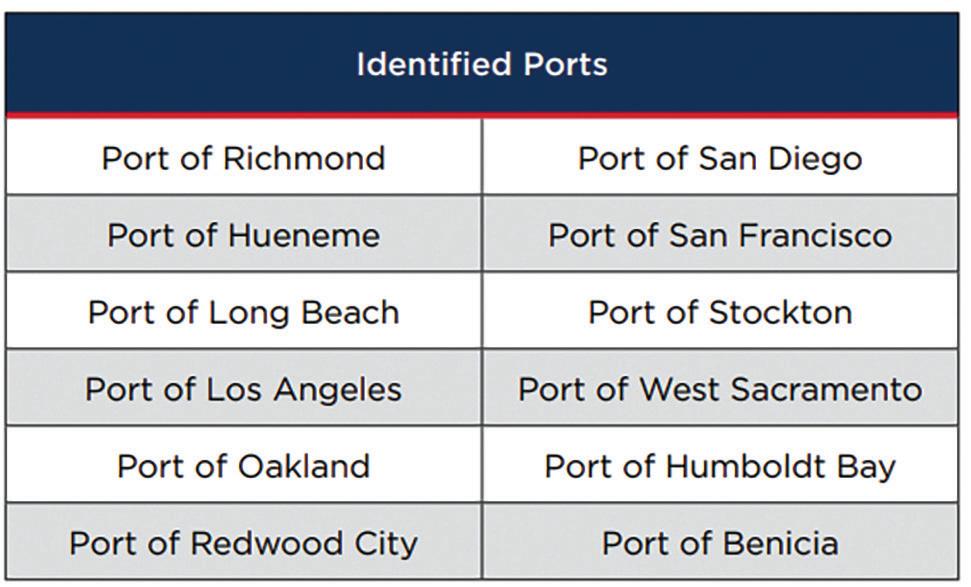
Energy Fuels Corp. ABS comments that “this service represents a significant step toward cleaner marine fuels,” a service expected to expand by 2030.
This section reviews existing or planned solar and wind projects. Ports have widespread interest in onsite power generation, but ABS writes that detailed information is limited. The table below summarizes the ports that have “expressed initiatives” to add solar and wind into their port infrastructure.
Shore power can reduce air pollution because docked vessels can shut down auxiliary engines and draw power from an electrical grid. ABS writes that emissions from land-based generation are typically lower than emissions from auxiliary engines, particularly when shore power is provided by renewable generation. The Study adds, however, that “it is worth noting that some renewable energy sources are intermittent and contribute to power system instability.” ABS writes that new generations will likely include floating nuclear power plants and offshore wind farms.
Shore power varies at California ports. Larger ports like Los Angeles and Long Beach have implemented both high-voltage and low-voltage shore connection systems. Availability is more limited at other ports or isn’t
available. ABS cites a need “for further investment in this technology.”
A big scale up in demand could result if harbor craft switch from fossil fuels to batteries.
ABS points out that there are challenges with all new energy generation and related systems, including updates and modifications to vessels and the landside electrical grid. Plus, there are unresolved safety issues — with automated cables, for example — and operating standards remain unsettled.
In this section, ABS describes some of the work underway at the 12 ports to build and maintain their alt-energy initiatives.
In recent years, the Ports of LA and Long Beach started many highprofile alt-energy projects. Long Beach, for example, has implemented a “Zero Emissions, Energy Resilient Operations (ZEERO) Policy” focusing on advancing green power generation and procurement. The Port is considering construction of a $4.7 billion floating terminal for wind turbine assembly and deployment.
ABS writes that while full electrification remains challenging for certain harbor craft duties, “the ports are implementing hybrid systems and investing in charging infrastructure.” Alternative technologies like fuel cells are being evaluated.
Work is just starting at other ports. The Port of Benecia, for example, is “exploring barge-located carbon-capture technology.” At the Port of Hueneme, shore power is a priority, and the Port is adopting zero- and near-zero-emission cargo handling equipment (CHE). Oakland, too, is working on shore power and recently approved a $2 million contract for a project that includes solar, battery storage, a fuel cell system and infrastructure upgrades. The Port of Richmond has public transportation
options to “reduce reliance on singleoccupancy vehicles.”
ABS writes that four alt-fuels stand out as current options for harbor craft: biodiesel, renewable diesel, bio-oil, and SVO — “straight vegetable oil.” But there’s no straightforward pathway to help with decisions about infrastructure and systems. ABS concludes:
“There are still a lot of uncertainties around future fuels mix, making it very hard for ports to develop robust future plans. Major ports have opted for the concept of green shipping, which allows them to specify their chosen fuel mix for further development. The success of this approach is yet to be proven.”
Even though the Study was released last August, port officials in California seem largely unaware of it. Officials at six large ports were asked, via email, whether they found the study helpful, whether it was a resource that would
help with decisions about alt-energy investments. Except for the staff at the Port of Hueneme, no one had anything to say about the study; most were not aware of it.
Giles Pettifor is Director of Environment and Sustainability at the Port of Hueneme. He said the Study is “helpful in providing a current snapshot of the state of the industry and state of the technology for alternative fuels for commercial harbor craft.” But he has not had any follow up with MARAD. In fact, he wasn’t aware the Study was released last fall.
Pettifor commented that “commercial harbor craft confront significant technical challenges with alt-fuels, e.g., space on board for technologies such as fuel cells or batteries.” He cited fire risks from Tier 4 engines and diesel filters. Lithium-ion batteries, he said, present heightened fire risks. He commented further that “so far, only a limited number of alt-fueled harbor craft are in operation. Therefore, we think

that such zero emission vessels are at least a decade away from general availability and deployment.”
Significantly, however, Pettifor added that based on a study undertaken at Hueneme, the Port itself could achieve zero emissions by 2030, if supportive funding continues. However, that analysis did not include harbor craft or trucking, Pettifor writes, “because in the near term neither vessels nor trucks are at a state of commercial availability and technical advancement for a seaport like Hueneme.”
Stergios Stamopoulos is ABS Director of Global Sustainability and the Study’s chief author. He said that ABS and MARAD are working now to develop a joint press release to announce the Study.
Stamopoulos commented that the Study can be used as a resource for “the energy transition.” He added that “the alternative fuels and technology landscape is still quite uncertain and there are many investment options for vessel owners and ports to consider when transitioning to low carbon technologies or fuels.”
He said that biofuels and biofuel blends are a key option to be considered. They are drop-in fuels and “require no retrofitting or significant changes to bunkering infrastructure.” Another option: battery power. He highlighted, for example, the success of Crowley’s E-Wolf tug.
MARAD officials did not respond to specific questions about the Study which can be accessed at https://maritime. dot.gov/innovation.
Tom Ewing is a freelance writer specializing in energy and environmental issues and related policies and regulations. He lives in Zionsville, IN.

Are you taking advantage of the many benefits of the APP? Call or email Jane McIvor: 604-893-8800 / jane@pacificports.org to discuss.
As drivers of economic growth, facilitating trade and generating thousands of jobs, ports of the Pacific Ocean share a common vision: To provide an efficient, fluid, and cost-effective supply chain in a safe, environmentally sustainable and economically viable manner. The Association of Pacific Ports (APP) assists Member Ports in achieving this vision by enabling the sharing of best practices and lessons learned, peer-to-peer networking, and professional development. Supported by Associate Members who provide a diverse range of solutions for both port operations and management, the APP is building partnerships throughout the Pacific.
APP member benefits provide a number of vehicles for you and your colleagues to network, promote best practices and raise awareness of challenges and opportunities.
Industry Representation and Collaboration — in addition to working with like-minded organizations on initiatives that improve facets of your business and the maritime industry, the APP participates in government and industry forums as well as key industry events (e.g., Clean Pacific, GreenTech, Seatrade, Pacific Marine Expo), not only to provide representation for Pacific Ports but also to ensure important information is shared throughout the membership.
Networking — through conferences and workshops, the APP provides opportunities for you to meet your counterparts from around the Pacific, learn through the sharing of best practices, and to develop life-long relationships with your peers. Promotional opportunities for Associate Members are also a key part of our agendas through presentations, distribution of materials, and table-top displays designed to heighten awareness of your products and services.
Communications & Marketing — all members are invited (and encouraged!) to:
• Submit articles, press releases and activity updates for Pacific Ports Magazine as well as our semi-monthly e-news updates and our frequently updated website. Not a writer? That’s okay, we can help.
• Three months free web banner advertising on pacificports.org as well as six e-news banner ads (with greatly discounted rates for additional advertising).
• Discounted rates for advertising in Pacific Ports Magazine.
• Opportunities to present at APP Annual and Winter Conferences.
• Participation on themed panel workshops.
To discuss your priorities and ideas, contact
Jane McIvor Executive Director
Association of Pacific Ports
jane@pacificports.org
604-893-8800

www.pacificports.org
Tradition meets innovation for the 2,000th time. To be delivered to Ravenna, Italy, the LHM 600 will assume a pivotal role in Marcegaglia’s logistics. The mobile harbor crane is perfectly suited for handling ships up to New-Panamax size. Its main work will involve handling steel products like coils, sheets, and strips. The hydrostatic drive and control systems enable precise and seamless cargo handling. The goal: achieve overall flexible, smoother operations. For another notable highlight, the unique, hand-crafted design of its slewing platform, inspired by the maritime heritage of both Rostock, Germany, and Ravenna, Italy, adds a touch of artistry to this historically significant engineering marvel.
A symbol of innovation and partnership
The special slewing platform design of the 2,000th LHM epitomises the innovative spirit and robust partnership between Liebherr and Marcegaglia. The design features a two-sided motif. One is an Italian side that includes a landmark from Ravenna, the Basilica di Sant’Apollinare Nuovo. It also features dock workers involved in port logistics, as well as an Italian inscription. The other side features a German text and lighthouse, highlighting the maritime and industrial tradition of Liebherr Rostock, from where the crane originated. These messages encapsulate the history and collaboration between Liebherr Rostock and Marcegaglia. The design ultimately reflects the blending of German engineering precision and Italian passion, symbolising a shared commitment to innovation and quality in the maritime industry.
Since the turn of the millennium, the partnership between the two
The mobile harbor crane is perfectly suited for handling ships up to New-Panamax size. Its main work will involve handling steel products like coils, sheets, and strips.
companies and cultures has been a defining feature of the Ravenna port’s evolution. The introduction of the first Liebherr mobile harbour crane in 2001, an LHM 400, marked the beginning of a transformative era. Over the years, four more mobile harbour cranes have joined the fleet, each one a testament to the enduring collaboration and shared commitment to excellence.
And now, as the largest LHM in the Ravenna fleet, the sixth mobile harbour crane provides additional logistics capacity in style.
A handover ceremony is planned for the summer in Ravenna to mark the significant collaboration between the
two companies, which are both rooted in family tradition. ‘This milestone LHM 600 exemplifies our commitment to delivering pioneering solutions for our customers’, stated Andreas Ritschel, General Manager Sales of mobile harbour cranes at LiebherrRostock GmbH.
Integrating the crane into their logistics network, Marcegaglia will further streamline processes and support the company’s strategic goals. Accompanied by Liebherr’s global service network, the company can also rely on consistent support and maintenance for their new crane. This LHM 600 ultimately symbolises the synergy between two industry leaders, driving forward with a shared commitment to excellence.

Ryan Pessah, Director of Government Relations for the Western Wood Preservers Institute (WWPI), started off his presentation to attendees at the APP 2025 Winter Conference with a bit of background about the organization. Founded just over 75 years ago and currently based in Washington State (previously in Oregon), WWPI represents the manufacturers of treated wood products (also known as preserved wood products). “You will all be aware of our products given their popularity for ports and marinas,” he said, adding that familiar products include timber pilings and deck boards.
Jumping right into the issue at hand, Pessah polled attendees to see how many were currently going through a permitting process with the U.S. Army Corp of Engineers (USACE). Turned out, quite a few. He surmised that it was also likely three or four additional levels of permitting agencies that were involved — local state, federal, and perhaps even international. “There’s a lot of overlapping and duplicity, and it causes a lot of headaches,” he said. Adding that one emerging issue was proving troublesome — specifically, how the USACE were applying a Biological Opinion published two and a half years ago through the National Oceanic Atmospheric Administration.
To set the context, Pessah led attendees through a quick refresher course –under the U.S. Rivers and Harbor Act, the USACE is responsible for approving any work in, under, and over navigable waters. “I can’t think of a project that you could do on your port that the Army Corps of Engineers doesn’t need to approve,” he said. Noting that while the USACE has eight divisions
“I can’t think of a project that you could do on your port that the Army Corps of Engineers doesn’t need to approve...”
worldwide, the issue the Pessah was raising dealt with the Northwest Division and specifically the Seattle District.
Further explaining that the USACE approves projects through two different avenues, Pessah described the differences between a “Regional General Permit” and an “Individual Permit”. A General Permit uses a regional or nationwide basis for activities that are substantially similar in nature and cause minimal individual or cumulative environmental impacts. The process is streamlined and can be as short as 60 days for approval. An Individual Permit, which could take up to two years to process, is used for activities that cannot be authorized under a national or general permit and the impact to the environment is unknown.
“The biggest distinction between these two is the time it takes to process,” he said. “For an Individual Permit, that means two years of headaches — two years of spending on environmental consultants to understand the unknown impact. So, most people go the route of obtaining a general permit when they’re working on a project.”
Pessah used a simple example to provide for an understanding of when a General Permit may not be enough: “Let’s say the General Permit that the USACE is going to issue is for a residential dock,” he said. “They’ll allow you to put in two pilings and maybe
a five-foot-square dock. Now let’s say you want it bigger than five square feet and you want to put in more than two pilings. And you want to choose the material for the pilings. The USACE will want to know the impact this will have on the environment, so you’ll have to assess that. They’ll want to know how many pilings and whether there will be a potential impact on any endangered species that might be known for the area. And you’re going to be going back and forth with them for about a year and a half, maybe two years.”
Tying in the Biological Opinion he referenced earlier, Pessah explained how this limits the use of preserved wood products. “I use the Seattle District Office of the USACE because they have a long history of trying to limit preserved wood products through General Permits,” he said. “One of the recent ways they’ve done that — again, using the example of a residential dock — was just an outright ban on preserved wood products in any state-owned lands or fish bonding areas. They otherwise limit the use of treated wood products by allowing only one preservative type, which is ammonium, copper, zinc, arsenate.”
Noting that Regional General Permits expire every five years, Pessah explained that in 2022, when asking for a reissuance of a permit that expired in 2017, it was denied. The reason for the denial was that the USACE was now using the Salish Sea Nearshore
Programmatic Consultation (SSNP) — what Pessah refers to as a Biological Opinion because, from the WWPI’s perspective, it was done without consultation and in contravention of the Administrative Procedures Act which requires a comment period.
The SSNP Consultation goes through the listed species in the Puget Sound and then provides guidance for the types of material allowed — “And not just what’s allowed, but where you’re allowed to use them; how much you’re allowed to use; and how they are to be installed,” Pessah said, adding that the Opinion uses the “Puget Sound Nearshore Habitat Conservation Calculator”. His PowerPoint presentation displayed a series of spreadsheets with multi-colored tabs, boxes and columns and a very detailed set of questions. When one variable is added, it is auto filled into other tabs.
Responses are calculated against a “credit/debit” score (for example, you’d received a credit if you were removing creosote-treated pilings). It was Pessah’s understanding that one needed to achieve a score of more than zero to be approved.
The calculations become more complicated for ports. “Take shoreline armoring,” he said. “You’re going to get credits for removing your shoreline armoring and not maintaining it, which seems counterintuitive when you consider sea level rise. But you’re going to get a debit for any maintenance of current shoreline armoring or extension and that debit is going to be dictated by how long the extension is and how much of an area you will be maintaining. Dredging is another section of the calculator that won’t work for ports. What if you’re going to be dredging more than two areas? If you have more than two, you’re required to consult with the USACE.” Pessah went on to say that once the “wrinkles” are sorted out with the
calculator, the intent will be to have ports use it.
“When I first started thinking about this, I felt it was going to be the end of the preserved wood industry in the marine environment,” he said. “But the more I thought about it, I realized that the more complicated problem would be how this was going to apply between various states. For example, if they apply Oregon standards to an Oregon calculator, that might not be so bad because at least the application is within the same local areas and regulations. But if Washington standards are applied to Florida or Alaska, we will have problems. It’s going to be very difficult to choose the best material for your job or do exactly what you want within your budget.”
It was through learning of a review of the process undertaken by the Washington State Department of Transportation for Washington State Ferries that the WWPI felt the need to act. A lengthy process resulted in lower standards being applied – for example, a lower threshold for impacts to listed species, creosote piling removal plans were longer term than usually required, and piling did not require to be wrapped.
“Western Wood Preservers Institute has been working with our federal counterparts to push back on these regulations,” Pessah said. “We have hired a third-party consultant to assess published material on whether all species listed are truly endangered. Are they migrating elsewhere because the temperature is changing? Is their population cyclical? And are treated wood products contributing to an adverse impact on listed species?”
Once the review is complete, WWPI will be better equipped to argue against the regulations. Pessah noted that other organizations are also working on ways to push back. The Pacific Northwest Waterways Association is

filing an Amicus Brief (a legal document submitted by someone not directly involved in a case but with a strong interest in the outcome). And the Seaport Alliance has started developing their own biological assessment. In closing remarks, Pessah encouraged the industry to stand together and work together to develop their own biological assessment. While the Biological Opinion (Salish Sea Nearshore Programmatic Consultation) is being piloted in the Puget Sound, it won’t take long for this to be applied to other regions. “And my question is, when the wrinkles are ironed out from the calculator, how long will it be before it comes to your port? How will it be implemented and how is it going to impact you?”
Pessah encouraged all ports to join together to address this issue. “We need to have a strong, united voice to be effective in addressing this,” he said.
“Western Wood Preservers Institute is here to help. If you have a project or are working with a consultant and have questions about this process, I’d be happy to answer any questions you might have.”
Ryan can be reached by email at Ryan@wwpi.org or by phone (619889-1666). The Institute’s website will also be helpful for general information: www.wwpi.org.
Following their sold-out conference in Marrakech, Morocco, Interferry is making plans for Interferry2025 — the organization’s 49th annual conference — in Sorrento, Italy from October 4 to 8. Hosted by President’s Sponsor the Grimaldi Group, this conference marks a return to the Mediterranean region. As the trade association representing the ferry industry worldwide, the Interferry conference is renowned for attracting top-level decision makers from a wide array of international companies including ferry owners and operators; shipbuilders; designers and engineers; equipment suppliers and manufacturers; and many other related fields.

Interferry2025 will be held at the Hilton Sorrento Palace Congress Center. Located within the conference hotel — the beautiful Hilton Sorrento Palace — the Congress Center creates an environment conducive to networking and collaboration and will be an excellent space for conference activities including the speakers’ program, coffee breaks, happy hours, and the sponsor displays. As always, the event will feature topical speakers
and sessions; the very popular Ferry Leaders panels; many outstanding networking opportunities; and a technical tour hosted by the Grimaldi Group. Sponsors and exhibitors will enjoy a large exhibition area in which to display their products and services to conference attendees.
Networking opportunities and events at Interferry2025 include: PreTours to Pompeii and the island of Capri; Partner Tours which include a
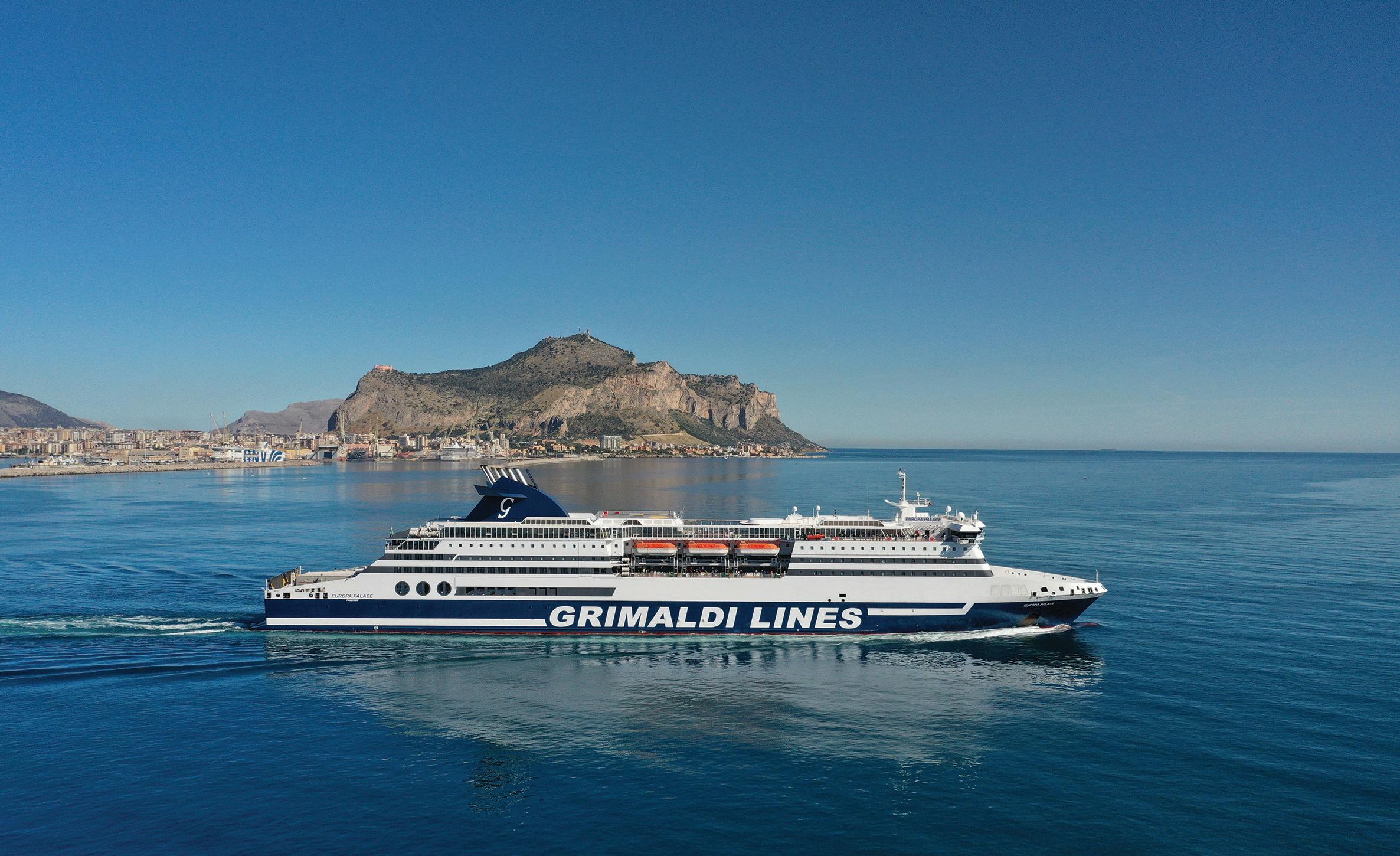
trip to Positano, a Sorrento Walking Tour and a La Limonaia Tour; the Sunday Welcome Reception; the Monday Networking Reception; and the Farewell Dinner on Tuesday. The Interferry2025 Technical Tour hosted by the Grimaldi Group will be on Wednesday October 8th. The Tech Tour promises to be an informative outing during which delegates will tour the Grimaldi Group operations in Sorrento, which is a great way to cap off the conference.
The Call for Speakers will be announced in early April as the Interferry team begins to develop another outstanding Speakers Program to elaborate on the Interferry2025 conference theme of “Connections”. Nothing epitomizes the ferry industry better than “Connections” — whether it’s connecting with communities, connecting families and friends, connecting with employees, connecting to the power grid or making sure customers and passengers have connectivity — “Connections” are key. The Speakers Program sessions and presentations will expand on the theme in a number of ways and will include the very popular Ferry Leaders Panels that close each conference day. Delegates will also hear from Regulatory Affairs Director Johan Roos who will provide a Regulatory Update — always a key aspect of the conference. The full lineup of presenters and keynote speakers will be announced by July. Interferry is continuing to implement “All Aboard”, the organization’s Strategic Plan for 2024 to 2026. An important initiative in the plan — Annual Sponsorships — includes revisions and enhancements to select
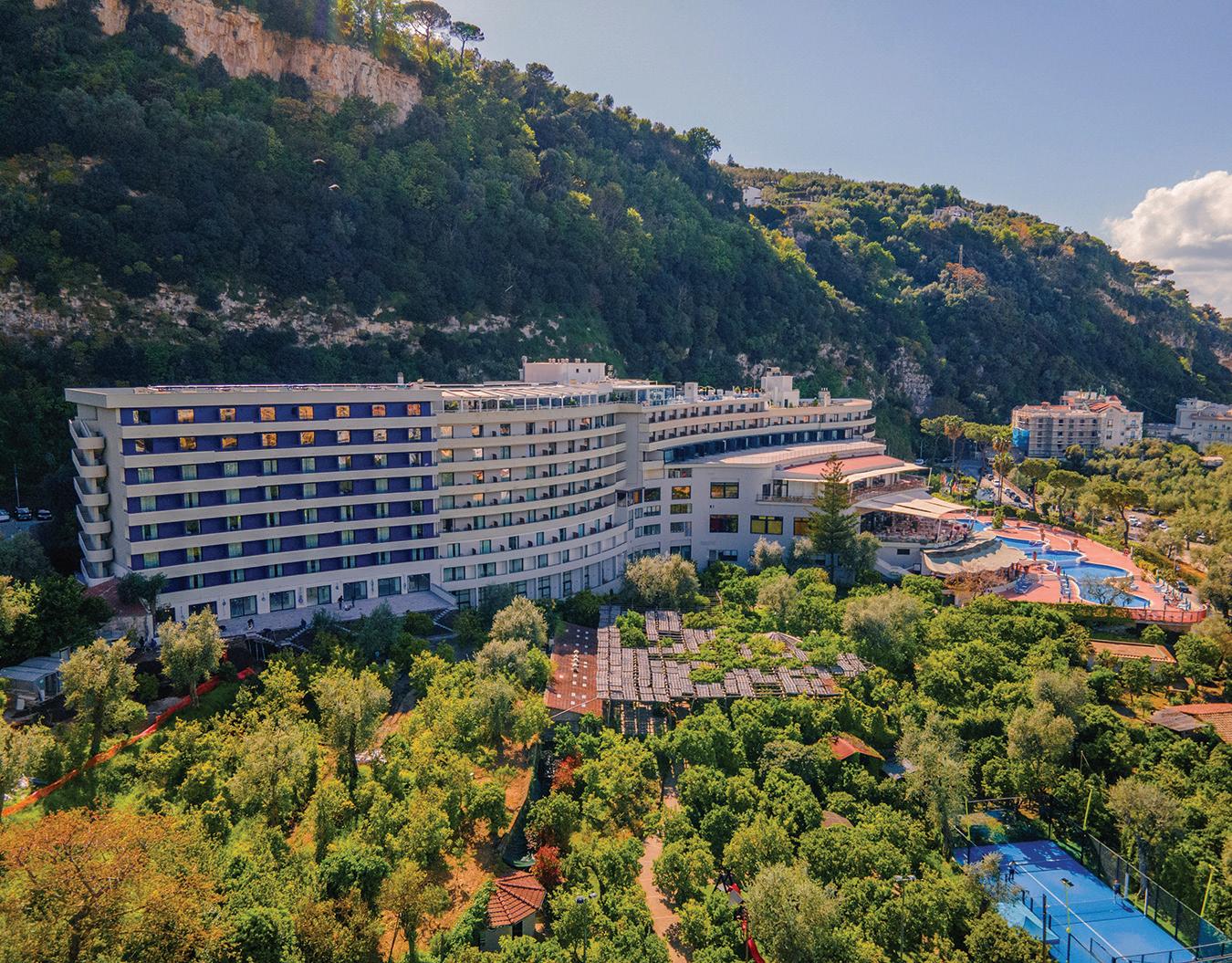
Nothing epitomizes the ferry industry better than “Connections” — whether it’s connecting with communities, connecting families and friends, connecting with employees, connecting to the power grid...
Sponsorship levels in order to boost recognition of corporate support for Interferry as an organization. The enhanced Annual Sponsorship packages will provide additional value throughout the calendar year. Sponsor commitments for Interferry2025 have been brisk as companies are keen to participate and support Interferry and the ferry industry as well as promote their businesses. Complete information on all conference sponsorship packages — including annual sponsorships —is available on InterferryConference.com. Information about annual sponsorships
is also available on Interferry.com. Conference registration for Interferry members opens May 1, and general registration opens July 1. As always, Interferry members get a discounted rate. Early bird rates for all registrations are in effect through August 15.
For complete conference information, check out the conference website at InterferryConference.com; follow Interferry on LinkedIn for news and updates; and subscribe to the Interferry mailing list on the conference website or Interferry.com.

Acapulco (acapulco.com)
Don Young Port of Alaska (www.portofalaska.com)
American Samoa Port Administration (americansamoaport.as.gov/)
Port of Brookings Harbor, Oregon (www.portofbrookingsharbor.com)
Cabo San Lucas (visitloscabos.travel/)
Port of Chiapas (puertochiapas.com.mx)
Commonwealth Ports Authority, Northern Mariana Islands (www.cnmiports.com)
Port of Ensenada (puertoensenada.com.mx)
Port of Everett (portofeverett.com)
Fiji Ports Corporation Limited (https://fijiports.com.fj/)
General Coordination of Ports and Merchant Marine (www.gob.mx/puertossymarinamercante)
Port of Grays Harbor, Washington (www.portofgraysharbor.com)
Port Authority of Guam (www.portguam.com)
Port of Guaymas (puertodeguaymas.com.mx)
Hawaii Department of Transportation Harbors Division (https://hidot.hawaii.gov/harbors/)
Port of Hualien, Taiwan International Ports Corporation, Ltd. (https://hl.twport.com.tw/)
Port of Hueneme, California (www.portofh.org)
Port of Kaohsiung, Taiwan International Ports Corporation, Ltd. (https://kh.twport.com.tw/en/)
Port of Keelung, Taiwan International Ports Corporation, Ltd. (https://kl.twport.com.tw/en/)
Port of Lázaro Cárdenas (puertolazarocardenas.com.mx)
Port of Long Beach, California (www.polb.com)
Port of Manzanillo (puertomanzanillo.com.mx)
Republic of Marshall Islands (RMI) Ports Authority, Marshall Islands
Port of Mazatlán (puertomazatlan.com.mx)
Nanaimo Port Authority, BC, Canada (www.npa.ca)
Port of Newport, Oregon (www.portofnewport.com)
Pohnpei Port Authority, Micronesia (www.ppa.fm)
Port Alberni Port Authority, BC, Canada (https://portalberniportauthority.ca/)
Port of Redwood City, California (www.redwoodcityport.com)
Port of Salina Cruz (puertosalinacruz.com.mx)
Port of San Diego, California (www.portofsandiego.org)

Port of Skagit, Washington (www.portofskagit.com)
Port of Stockton, California (www.portofstockton.com)
Port of Taichung, Taiwan International Ports Corporation, Ltd. (https://tc.twport.com.tw/en/)
Ports Authority Tonga (www.portsauthoritytonga.com)
Port of Topolobampo (puertotopolobampo.com.mx)
Port of Umatilla, Oregon (https://portofumatilla.org/)
Port of Valdez, Alaska (https://www.valdezak.gov/151/Port)
Puerto Vallarta (puertovallarta.com.mx)
ADELTE Ports & Maritime (www.adelte.com)
Albion Marine Solutions (albionmarine.com)
AM Insurance (www.amibrokers.com)
The Beckett Group (www.thebeckettgroup.org)
Best Best & Krieger Attorneys at Law (www.bbklaw.com)
Burns & McDonnell (www.burnsmcd.com)
Business Oregon (www.oregon.gov/biz/)
EA Engineering, Science and Technology, Inc. (www.eaest.com)
Federated Shipping Company
FortisBC (www.fortisbc.com)
Harman Kemp North America Limited (www.hknal.com/)
Kongsberg Maritime Canada Ltd. (www.kongsberg.com)
Law Office of Alan K. Goldstein (www.alankgoldsteinlaw.com)
Liebherr USA, Co. (www.liebherr.com)
Liftech Consultants (www.liftech.net)
Lynker (www.lynker.com)
Majuro Stevedore & Terminal Company, Inc.
Marine Labs Data Systems Inc. (www.marinelabs.io/)
Maritime and Port Bureau, Taiwan (www.motcmpb.gov.tw)
Matson (www.matson.com)
Pacific Coast Intermodal Port (pcipproject.com)
The Pasha Group (https://www.pashagroup.com)
Reid Middleton, Inc. (www.reidmiddleton.com)
Schrader Co. Sales, LLC (www.schraderco.com)
Shey-Harding Associates (www.shey-harding.com)
Seen Safety Inc. (www.seensafety.com)
SSA Marine (www.ssamarine.com)
Trans Mountain (www.transmountain.com)
Truk Transportation
Tynebridge Solutions Inc. (www.tynebridge.ca)
Vector Corrosion Technologies (vector-corrosion.com)
Western Wood Preservers Institute (www.wwpinstitute.org)
Association of BC Marine Industries (abcmi.ca)
Green Marine (https://green-marine.org/)
Inland Rivers, Ports & Terminals
Association (https://www.irpt.net/)
Interferry (www.interferry.com)
International Association of Maritime and Port Executives (www.iampe.org)
Pacific Coast Congress of Harbormasters & Port Managers (www. pccharbormasters.org)

CALL FOR SPEAKERS OPENS IN APRIL MEMBER REGISTRATION OPENS MAY 1
Nothing epitomizes the ferry industry better than the Interferry2025 conference theme of “Connections”. Whether it’s connecting with communities, connecting families and friends, connecting with your employees, connecting to the power grid or making sure your customers and passengers have connectivity – “Connections” are key. Interferry2025 will be held at the Hilton Sorrento Palace Congress Center which is a fantastic venue. The conference will feature topical speakers and sessions expanding on our theme; ferry leaders panels; outstanding networking opportunities; and a technical tour. Sponsors and exhibitors will enjoy a large exhibition area in which to display their products and services to conference attendees.
For the latest information check the conference website, follow our social media and subscribe to our mailing list.

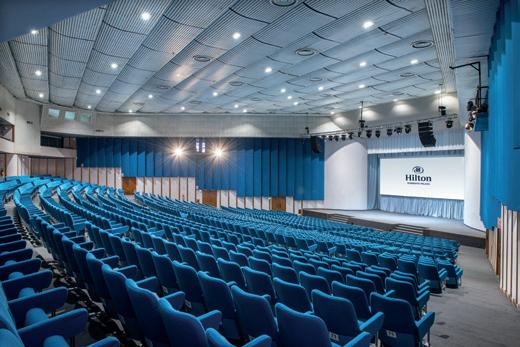


“Join us at our 49th annual conference as we return to the Mediterranean region in Sorrento, Italy from October 4 – 8… hosted by the Grimaldi Group!”
Mike Corrigan – CEO, Interferry
